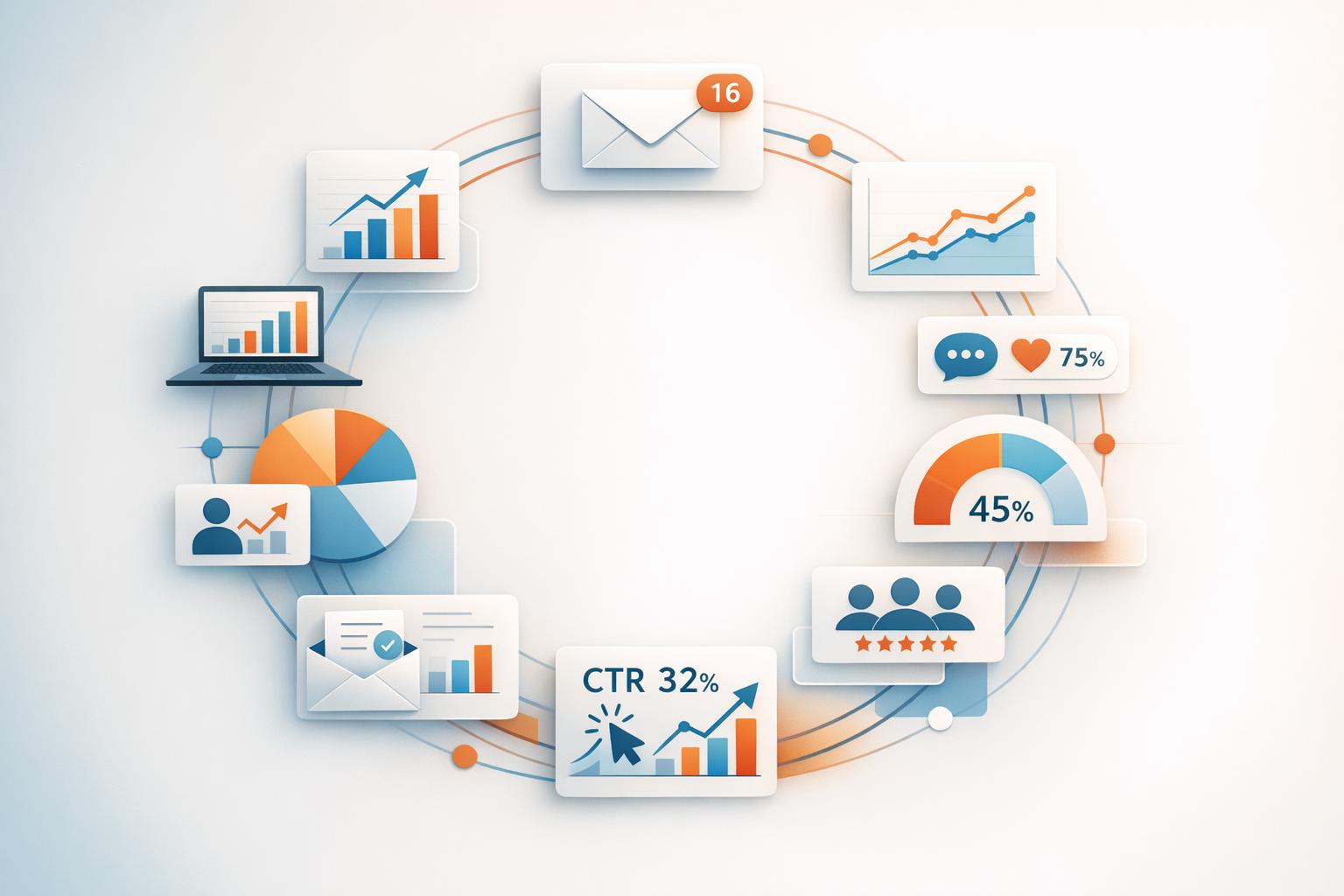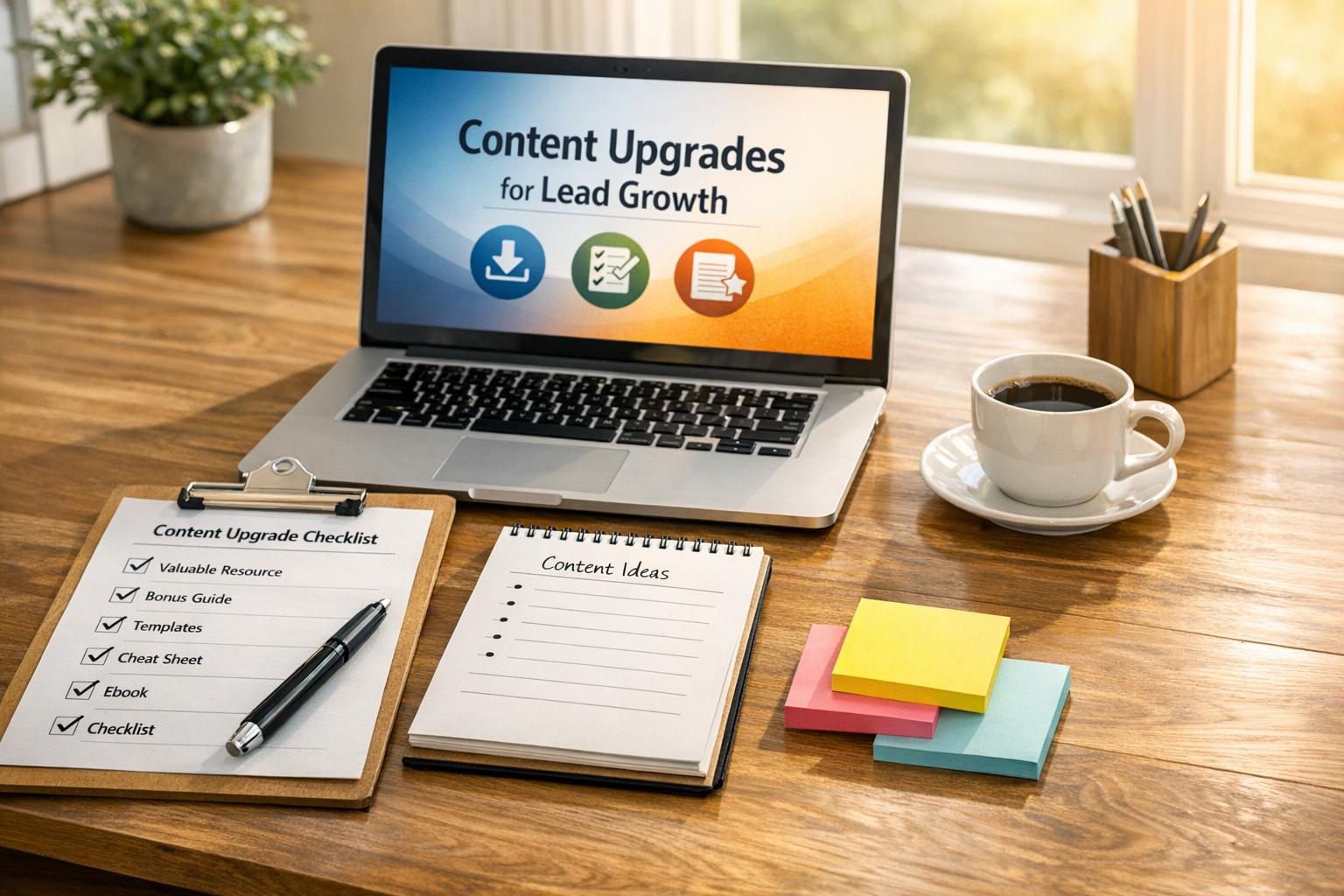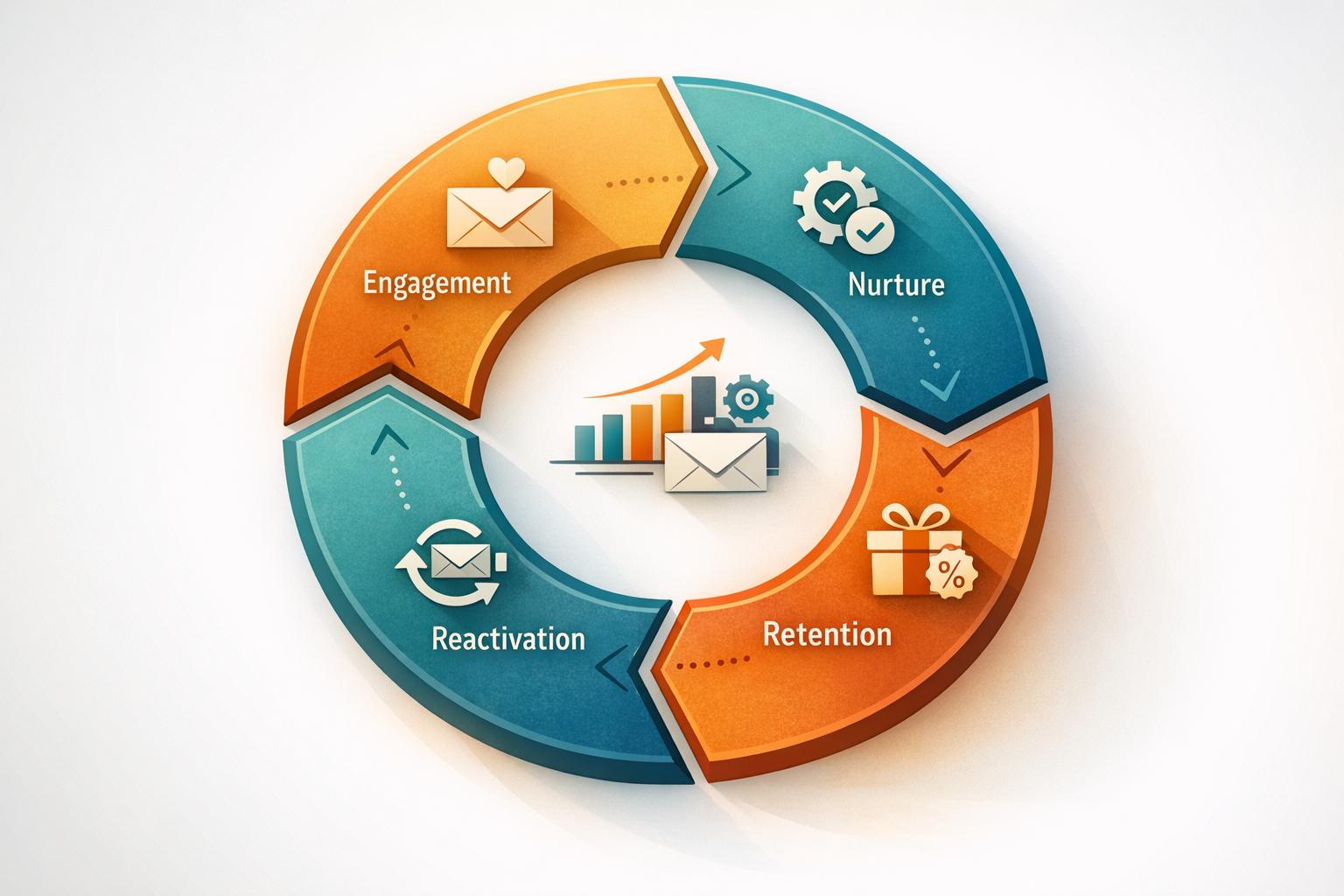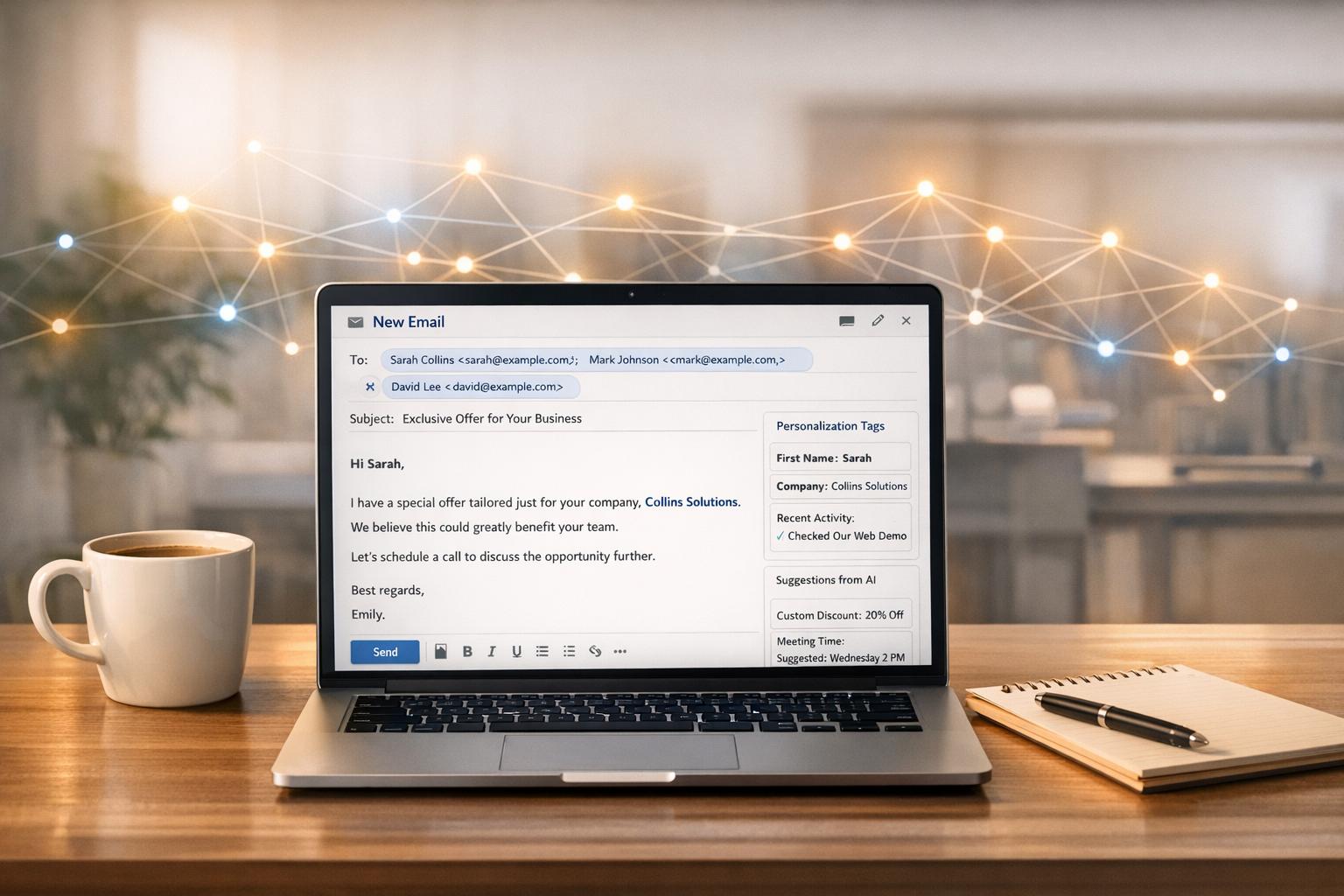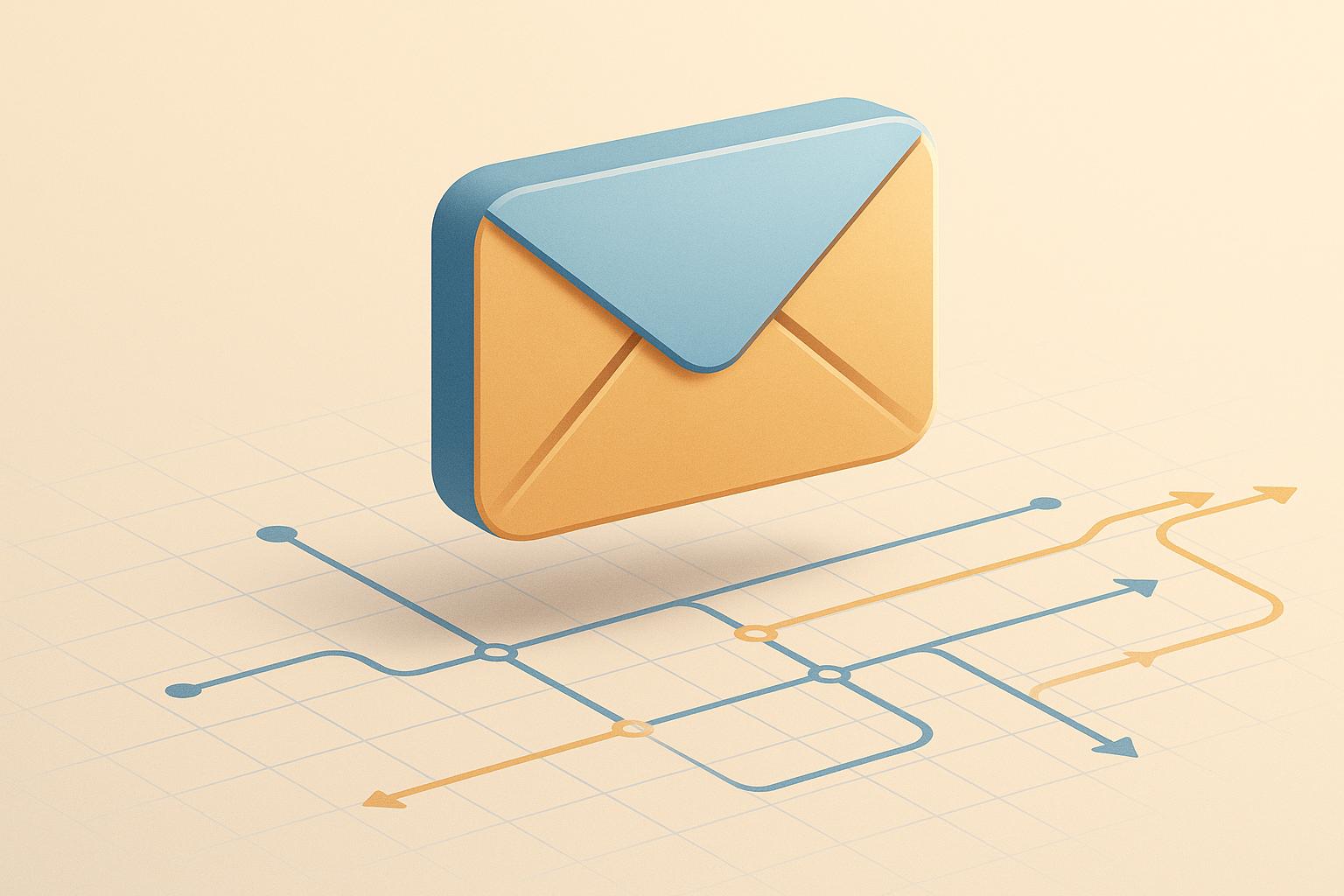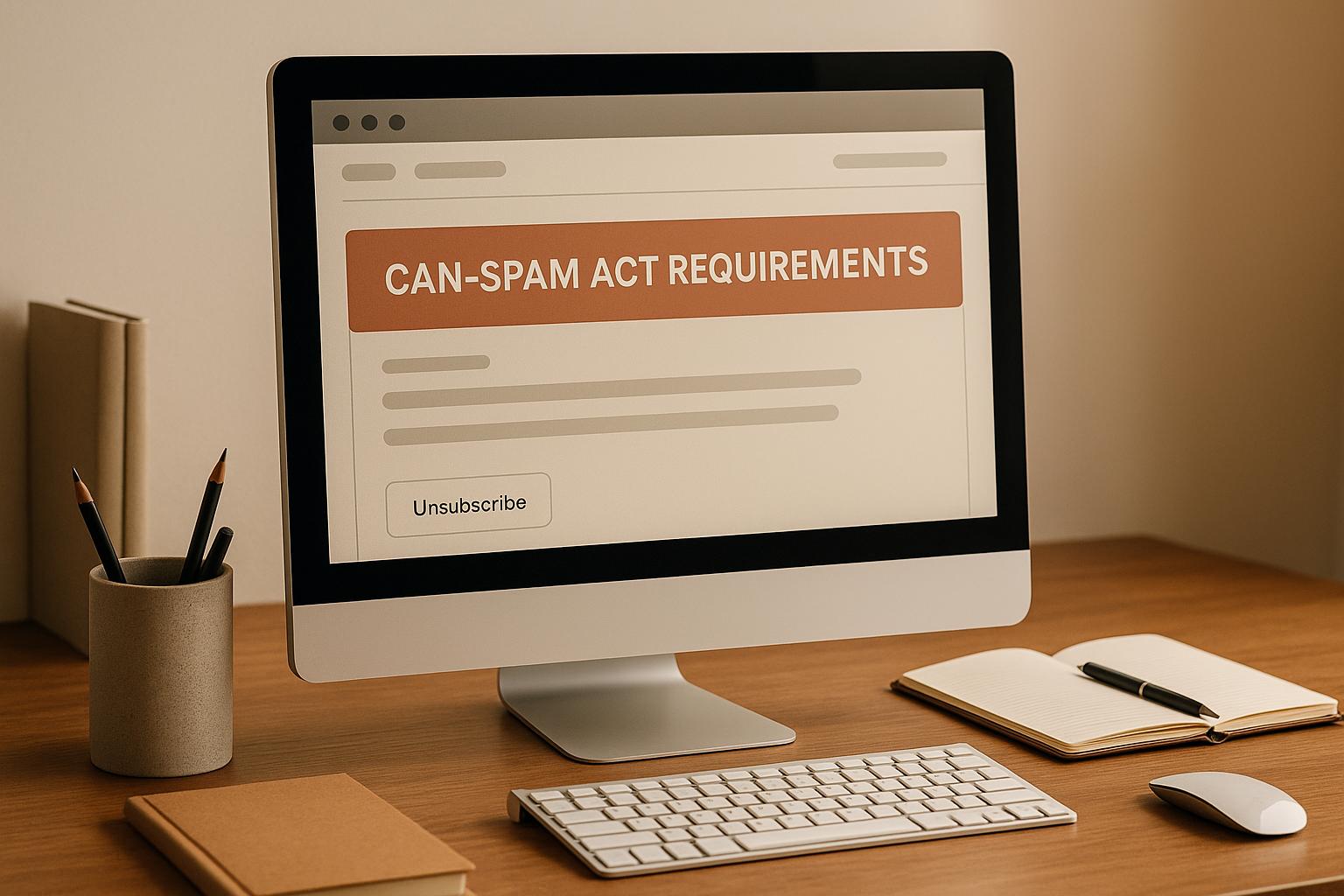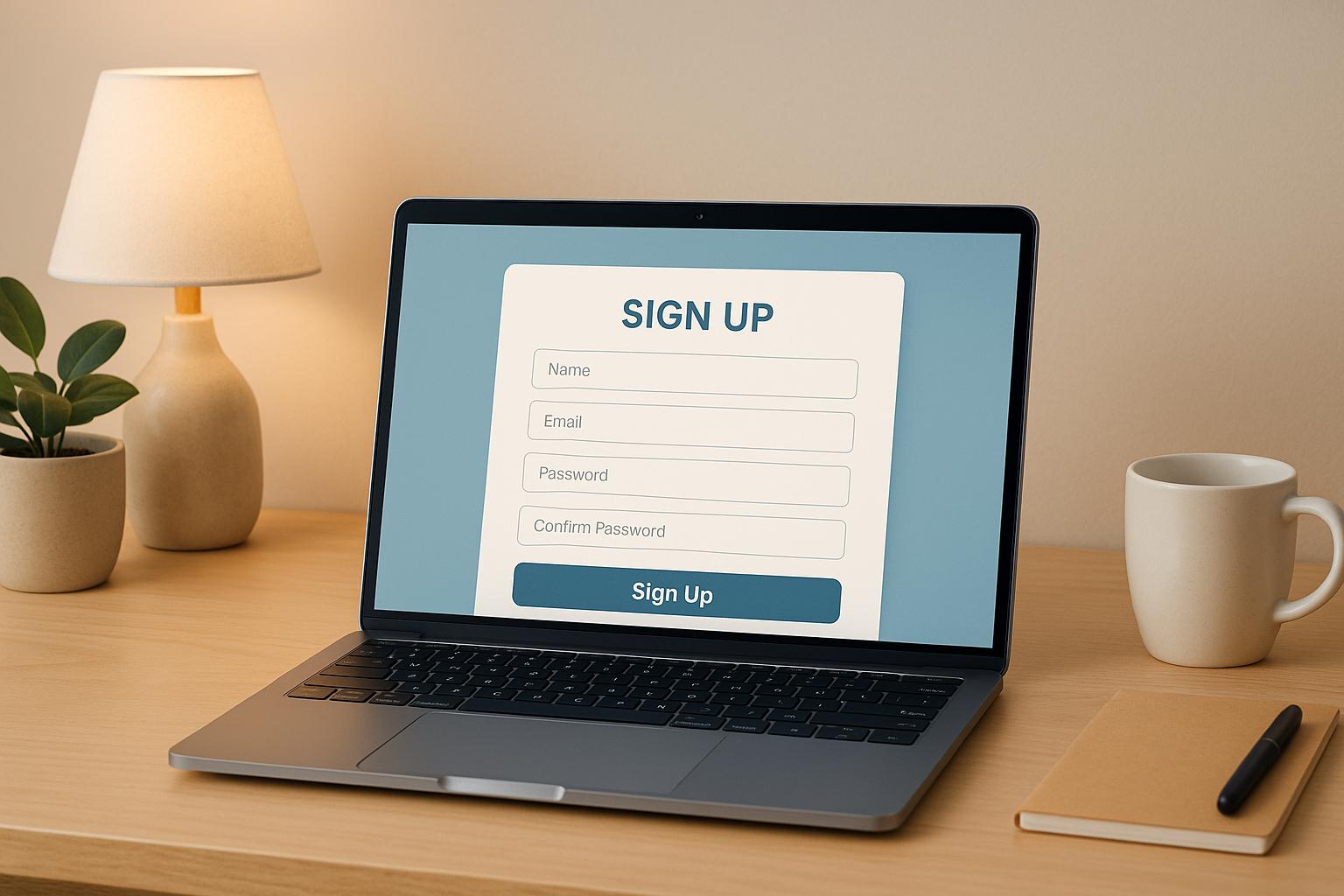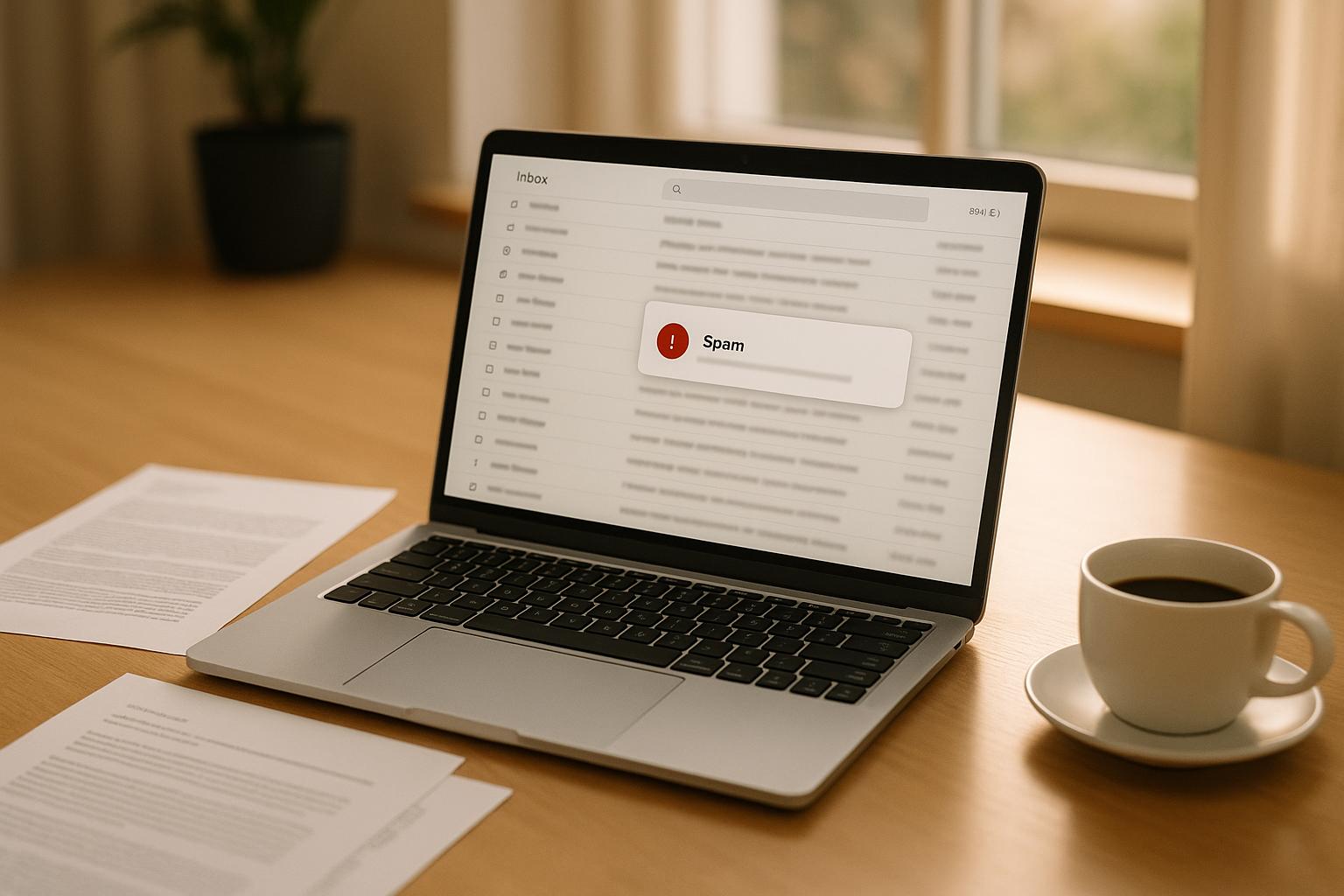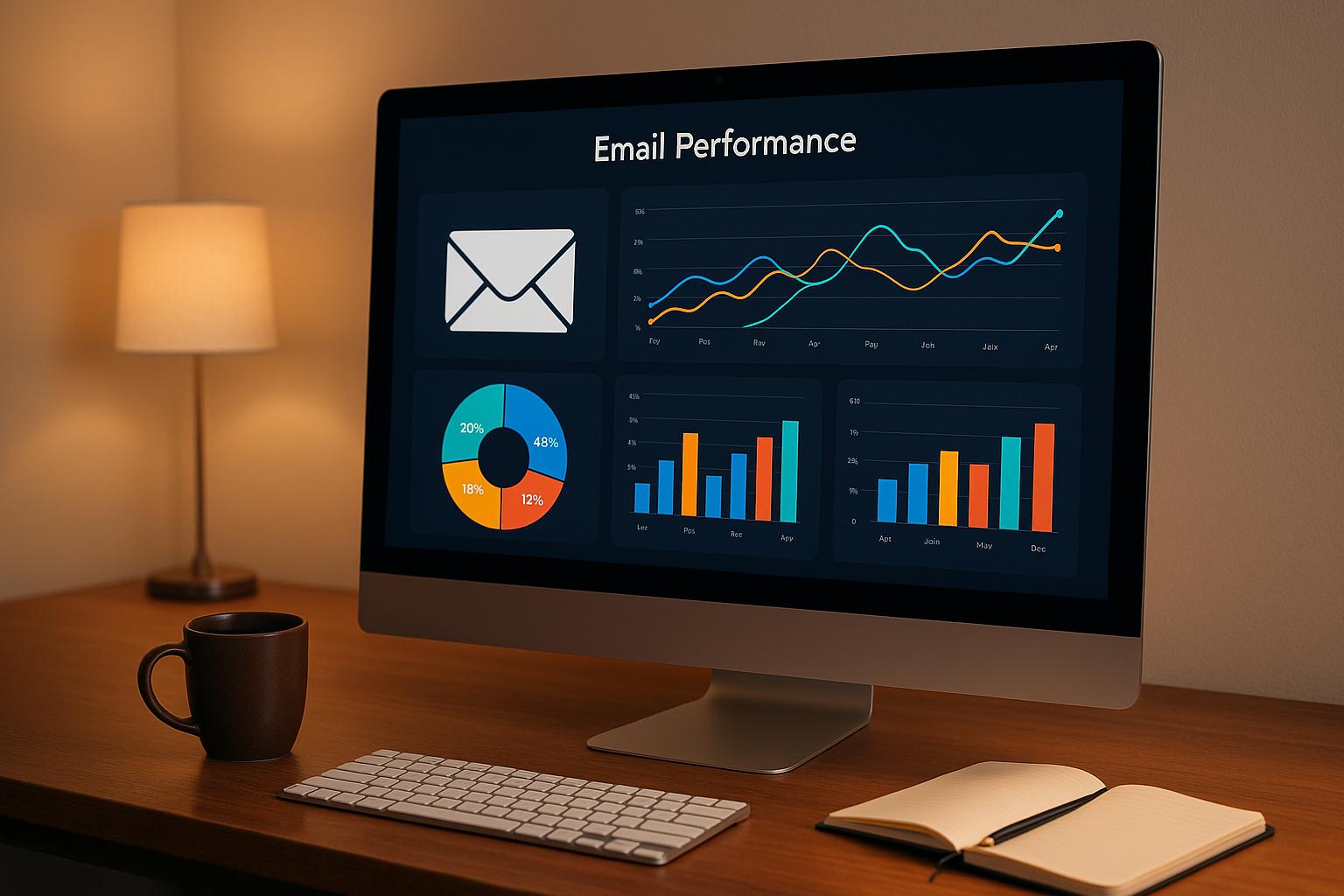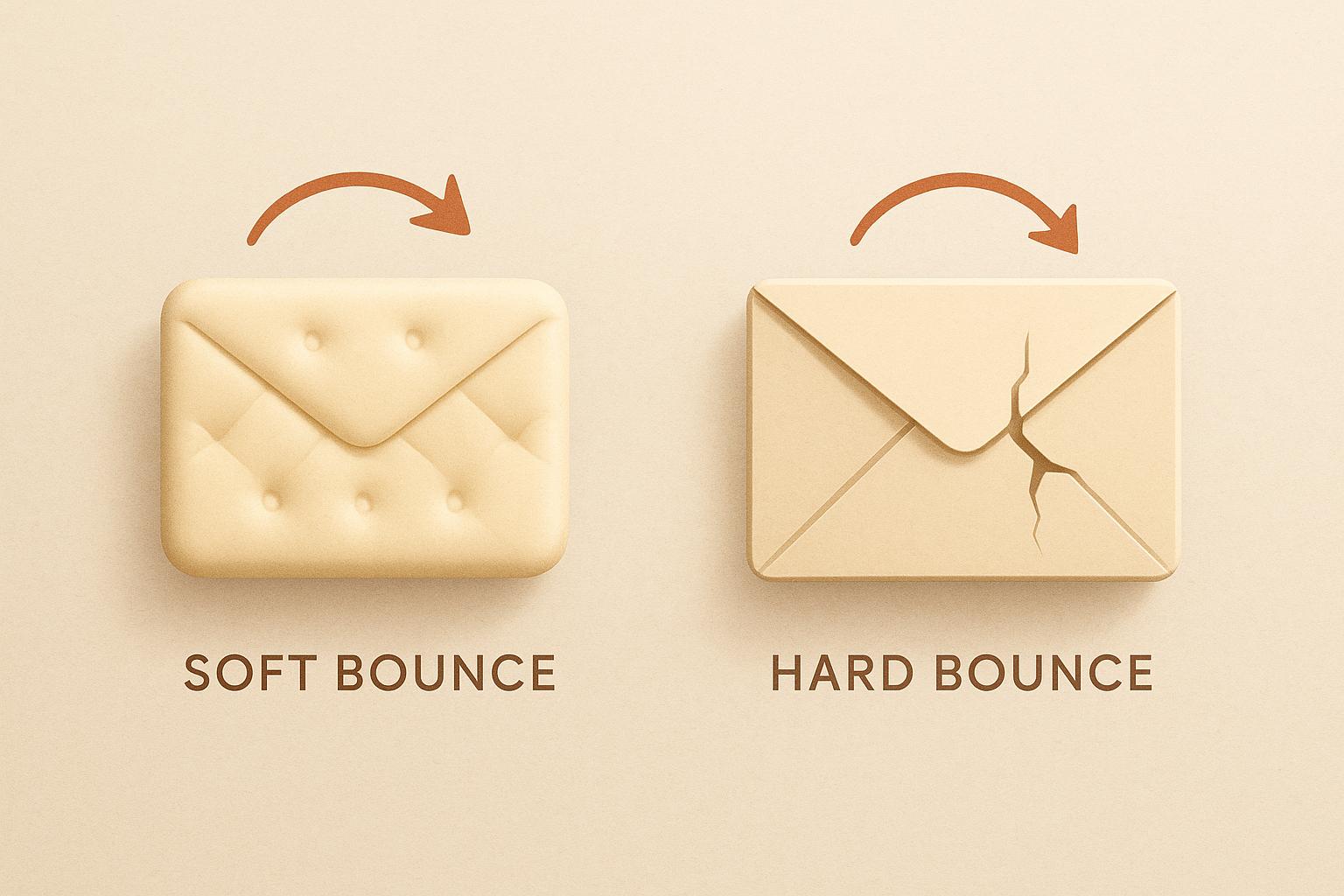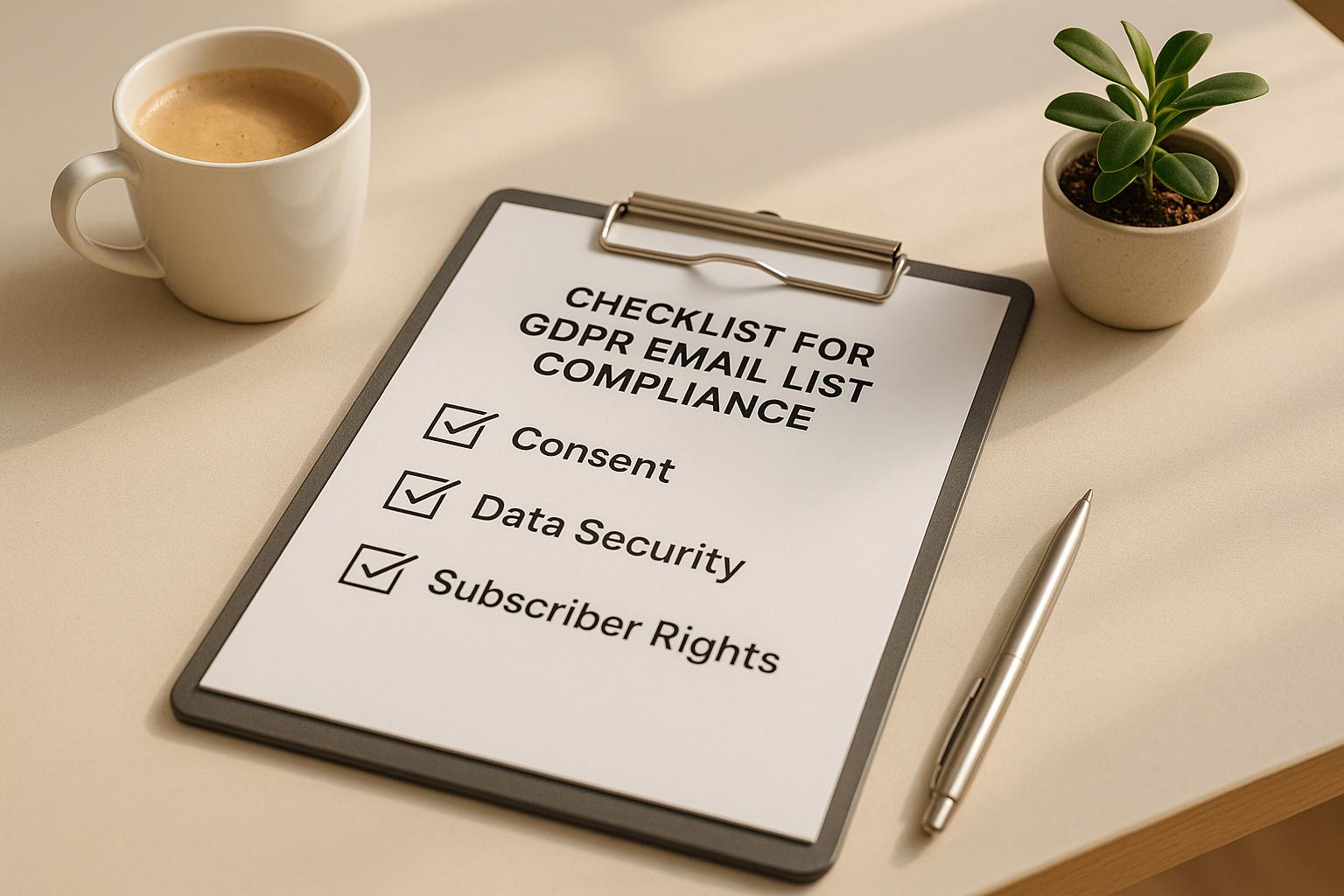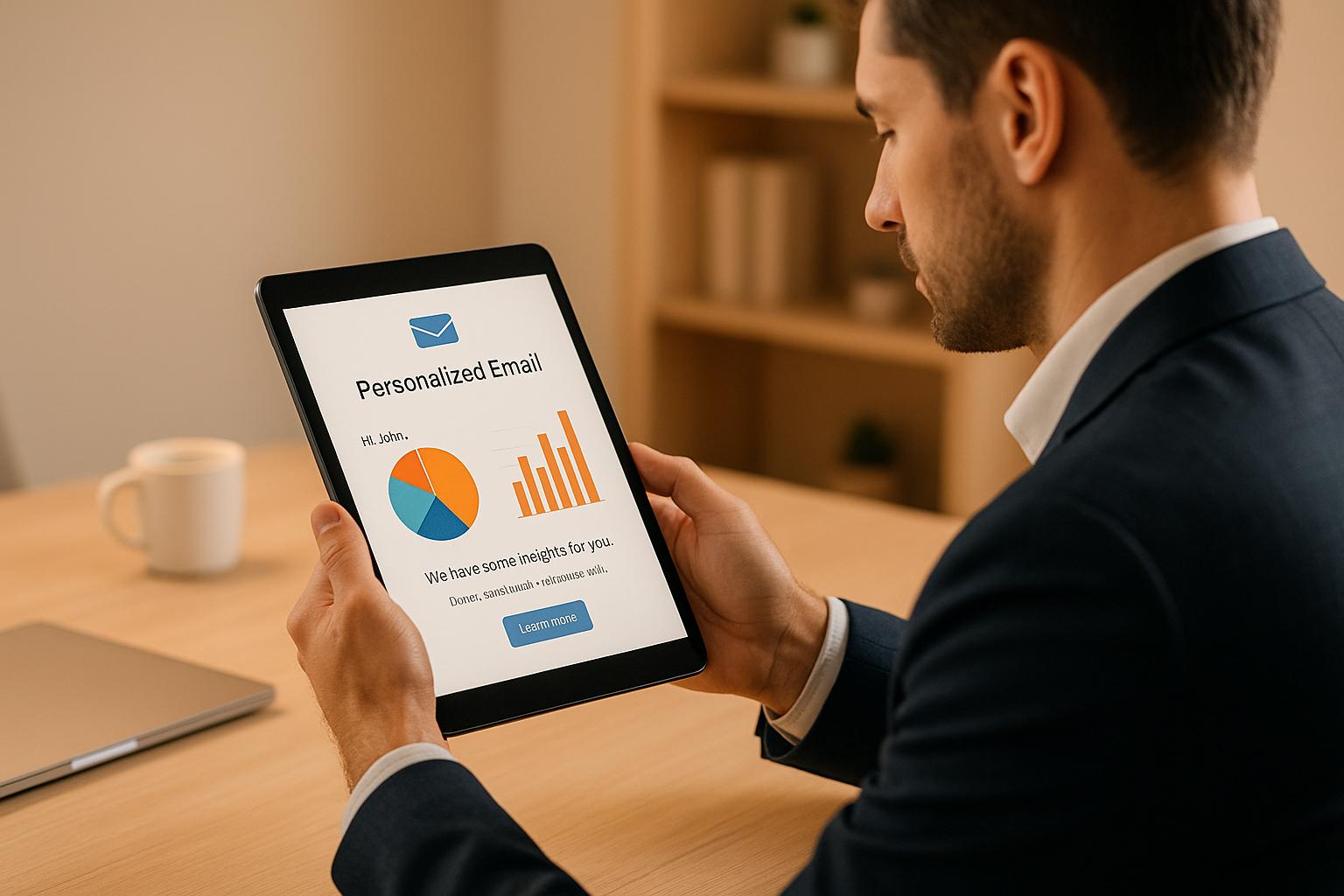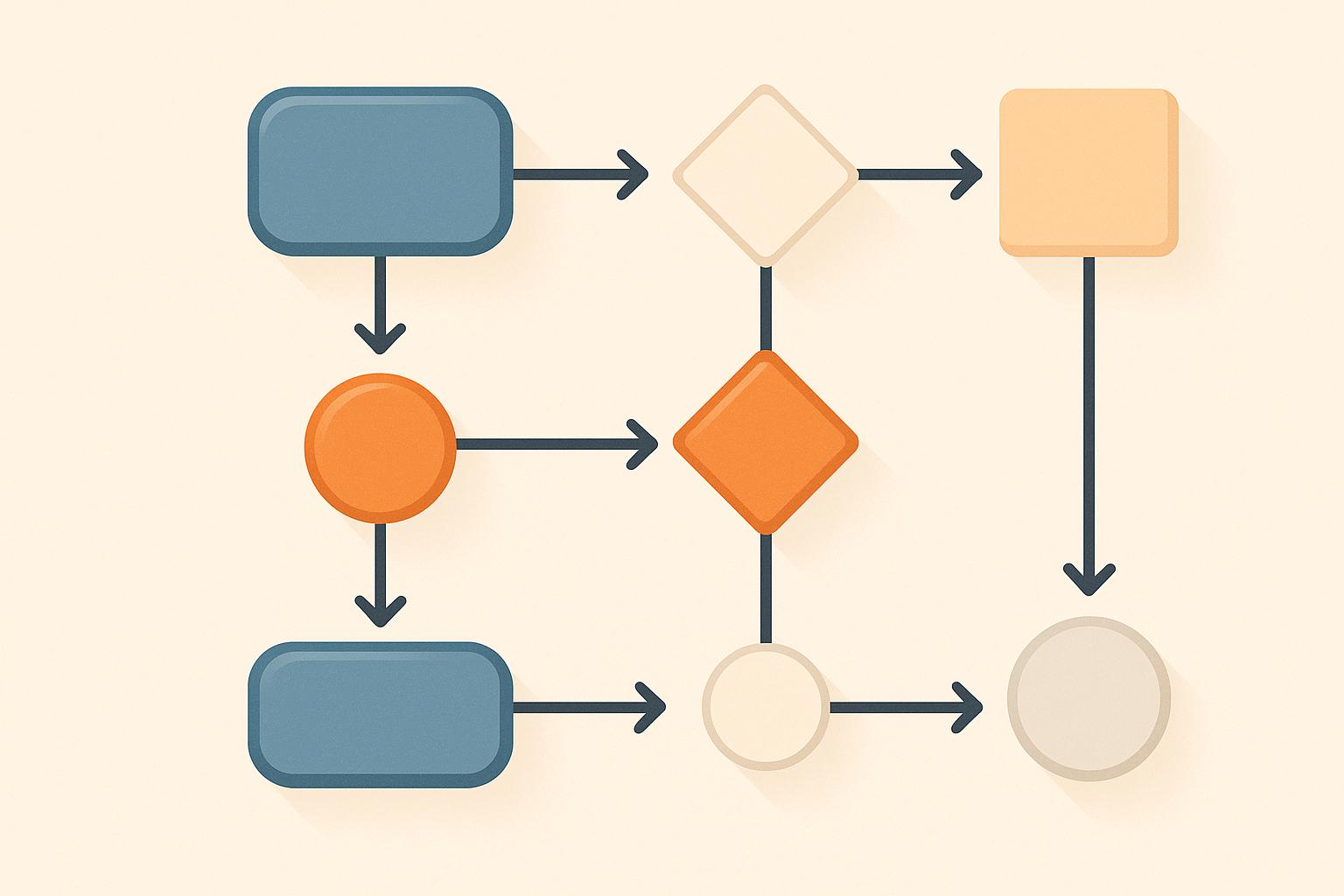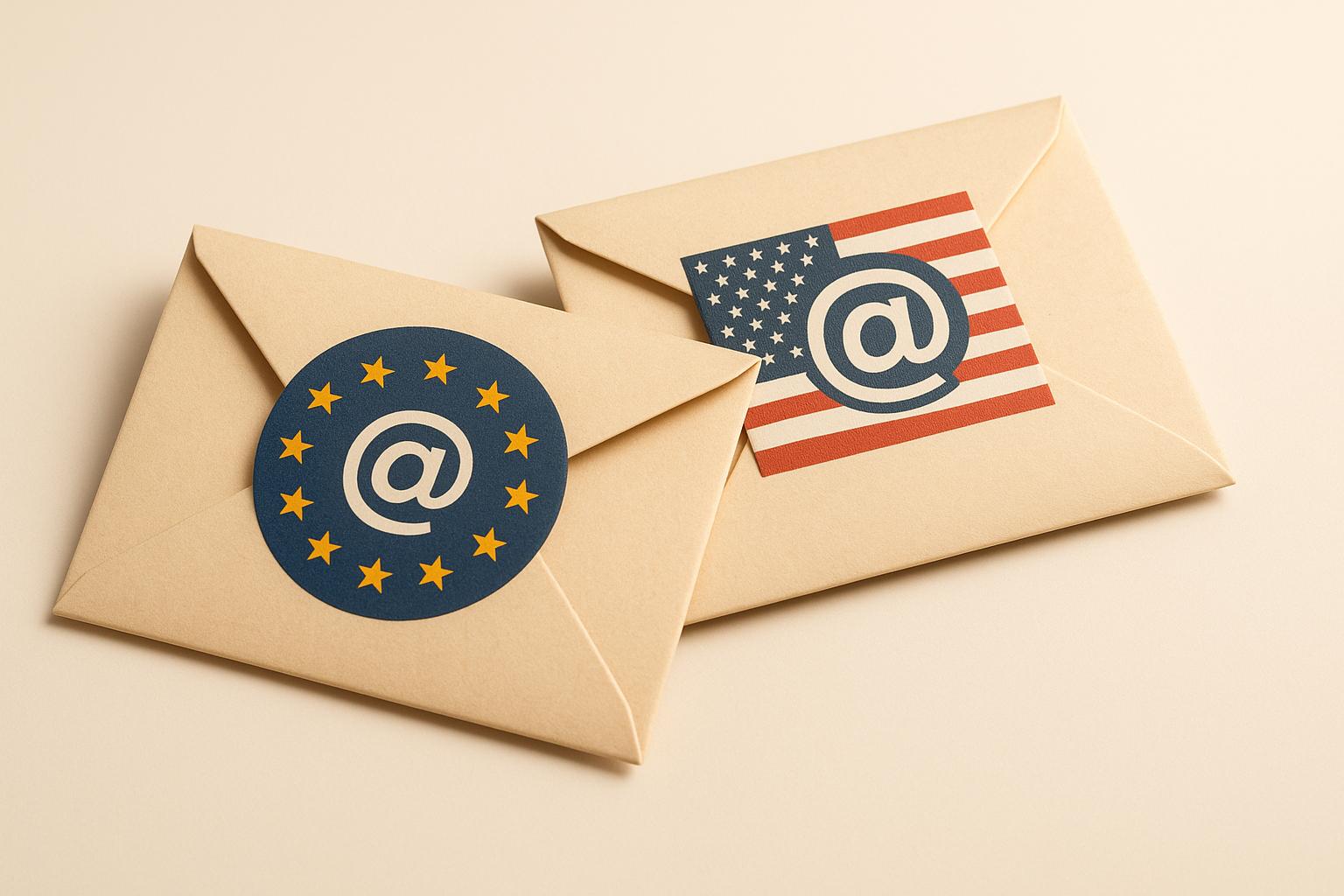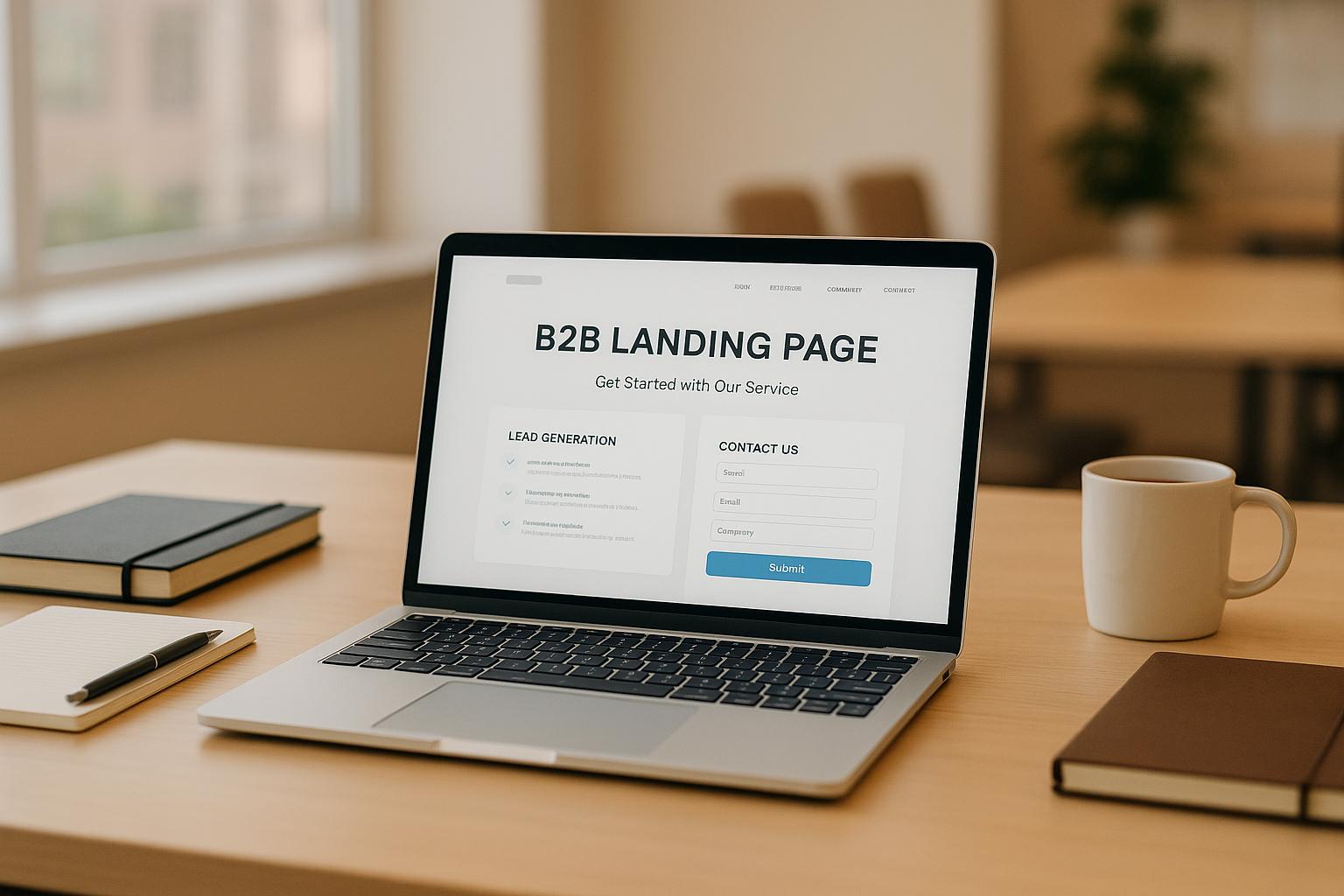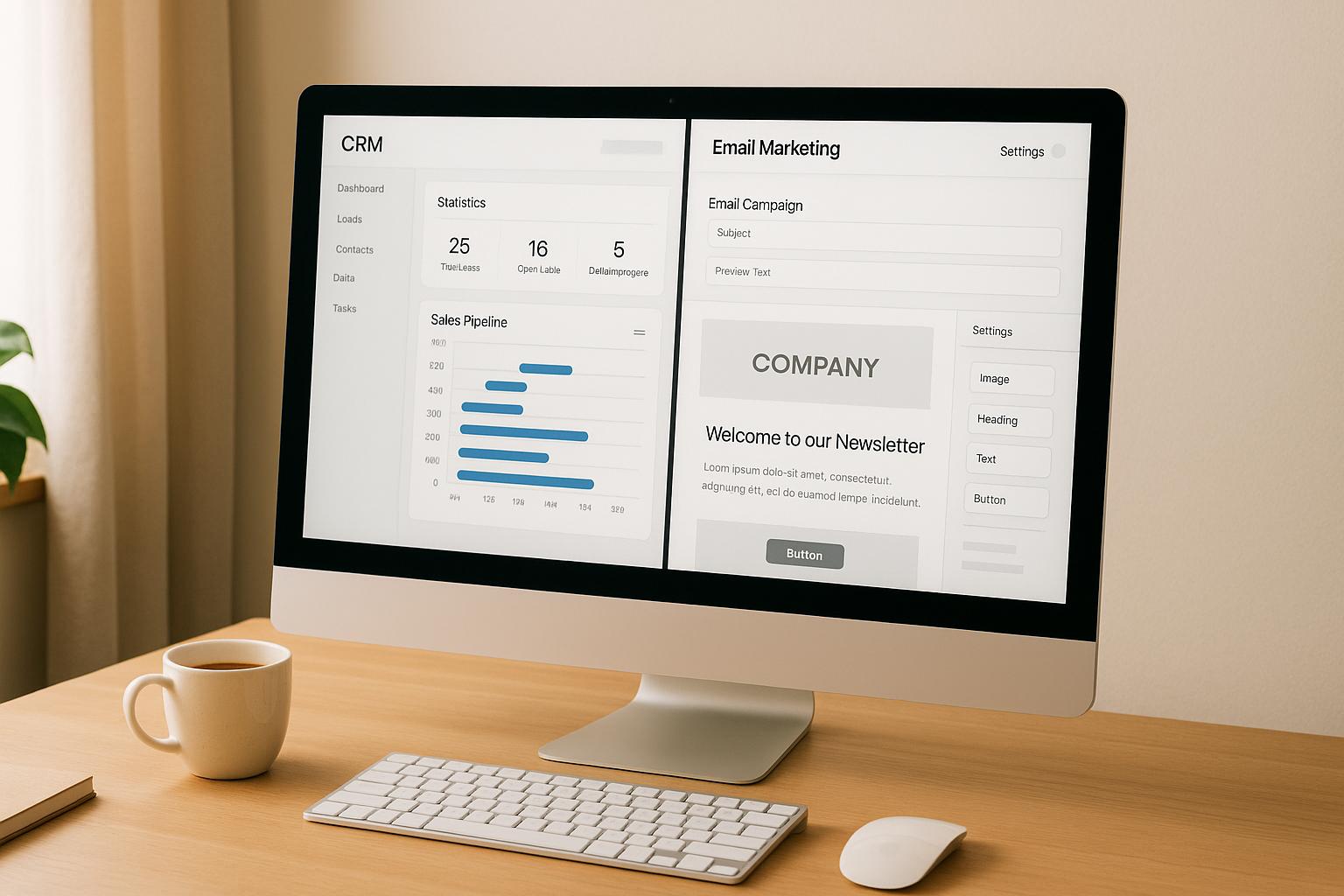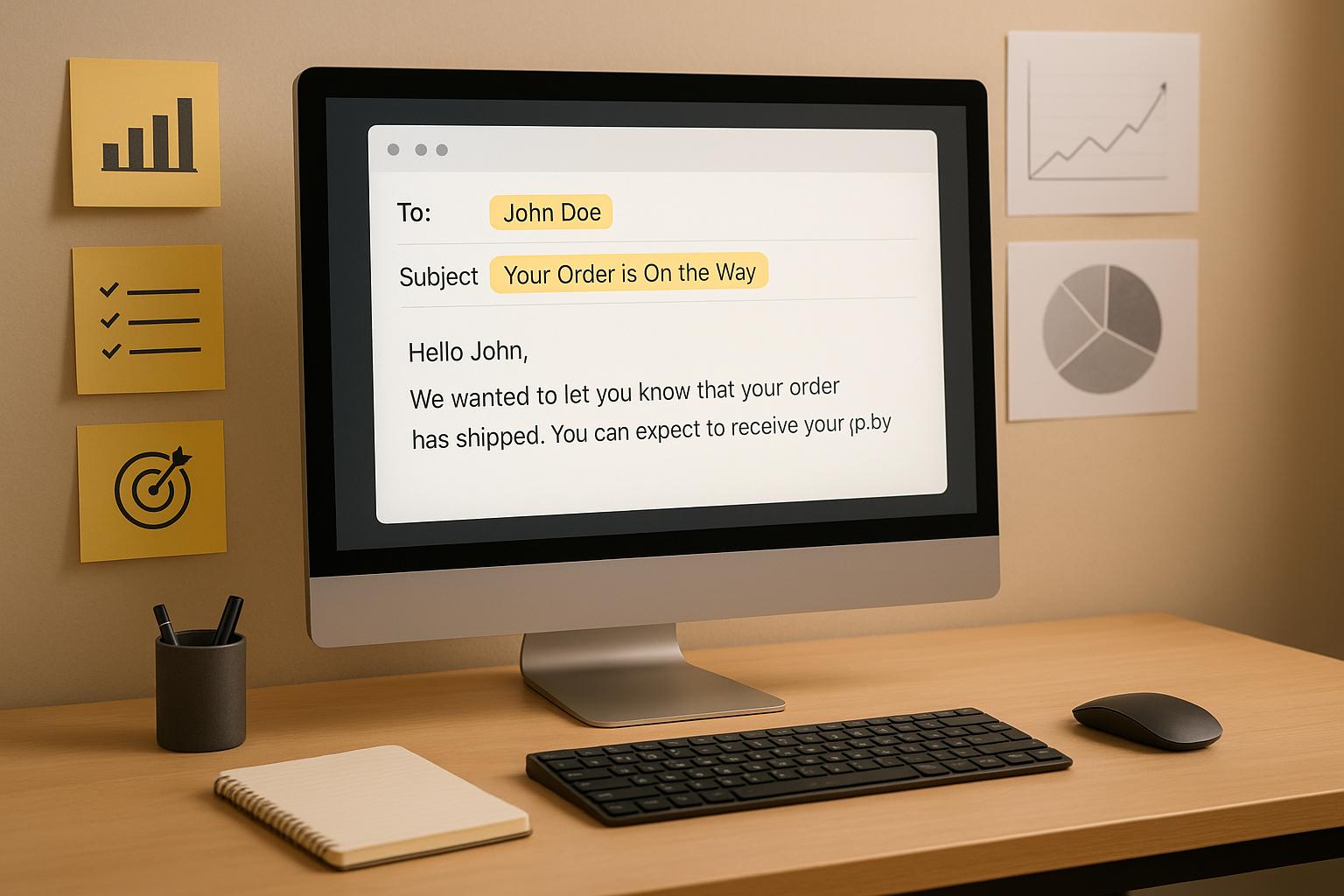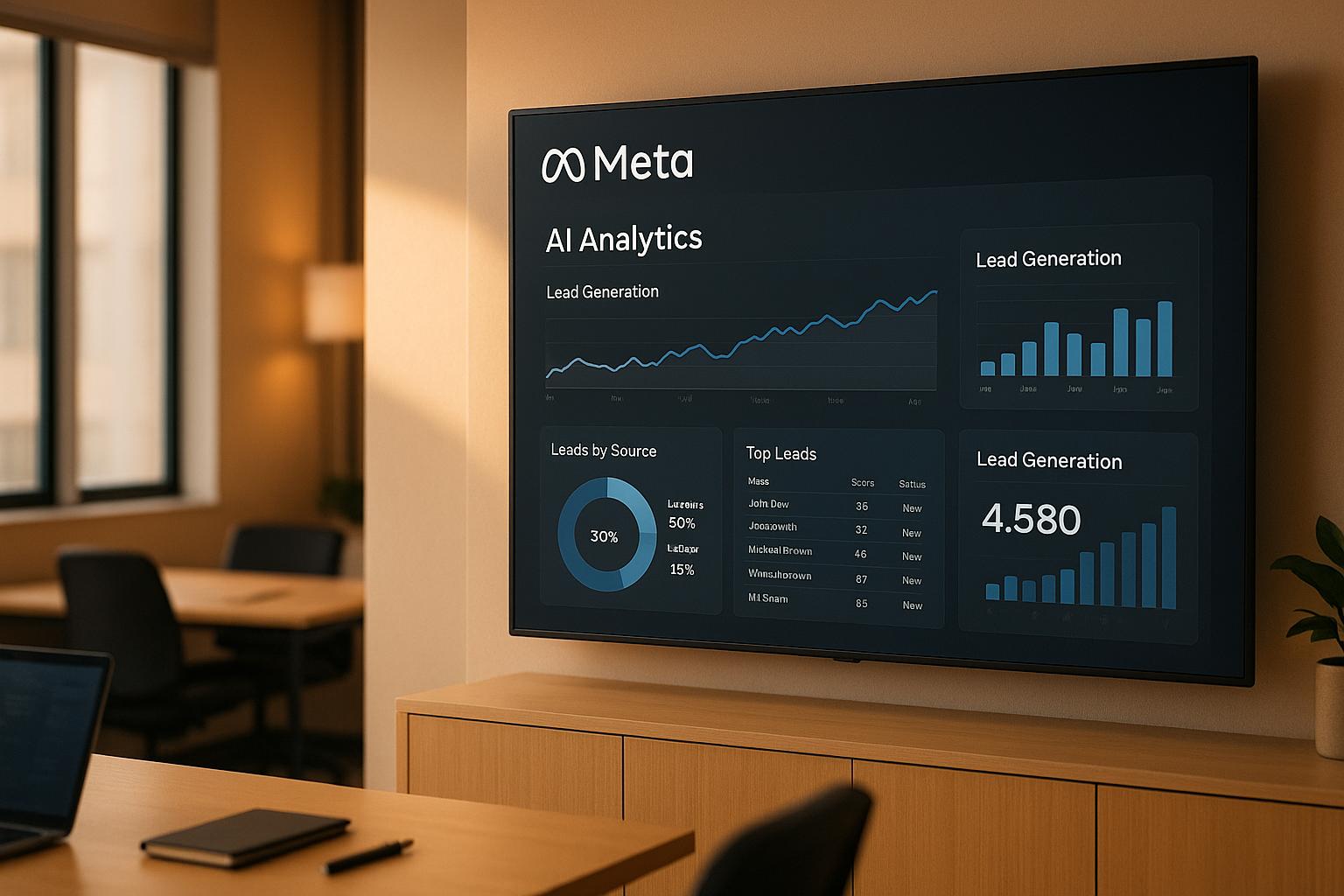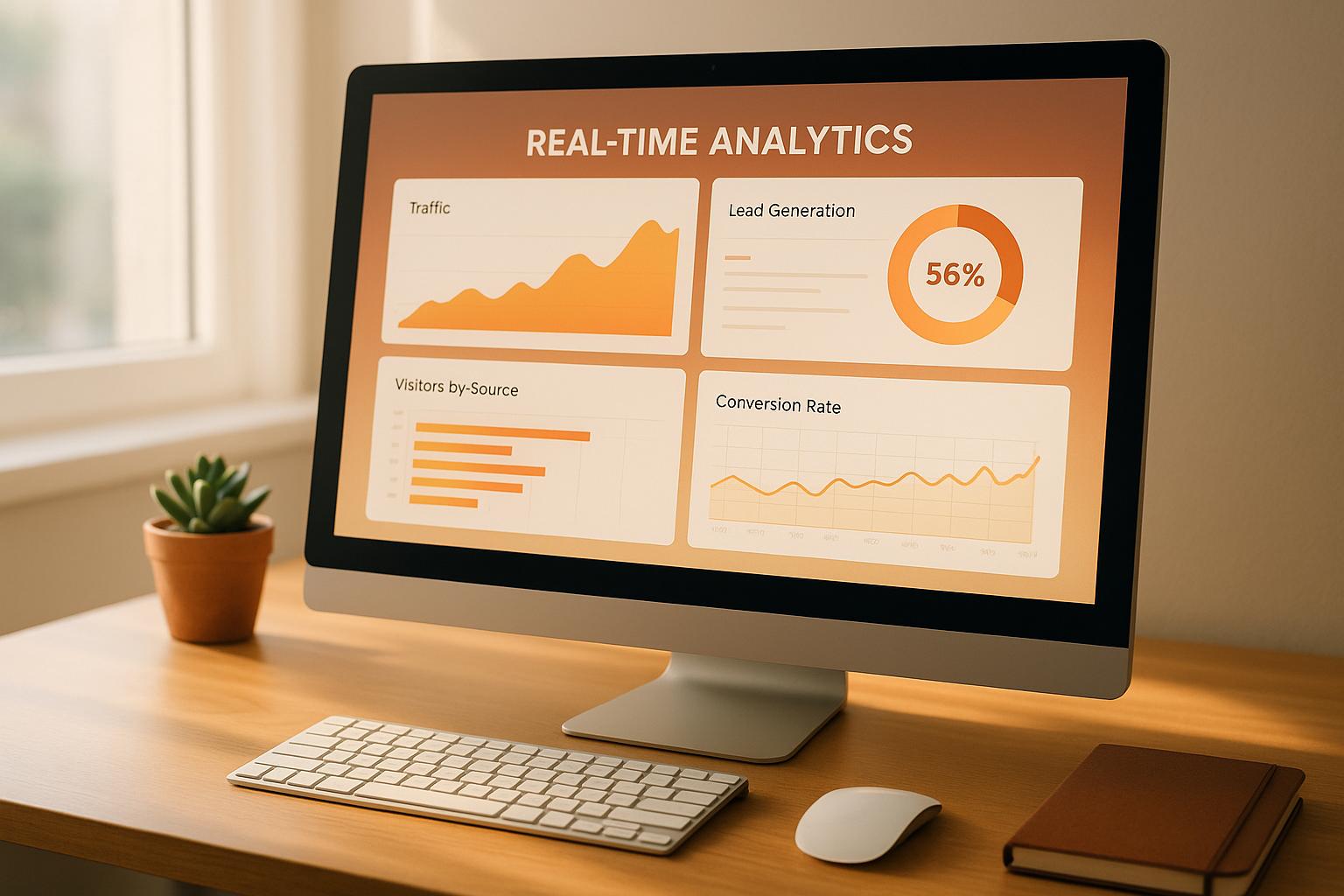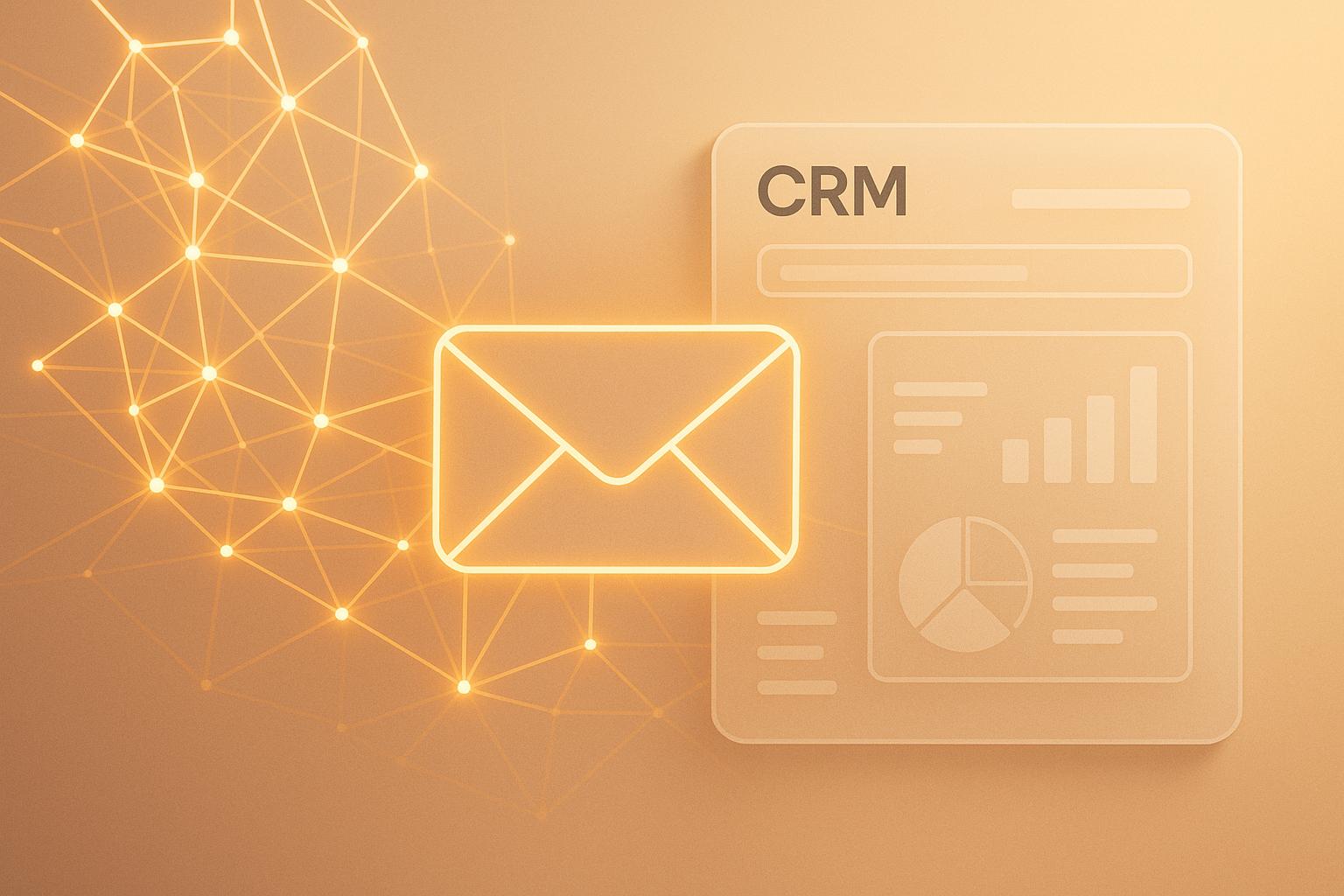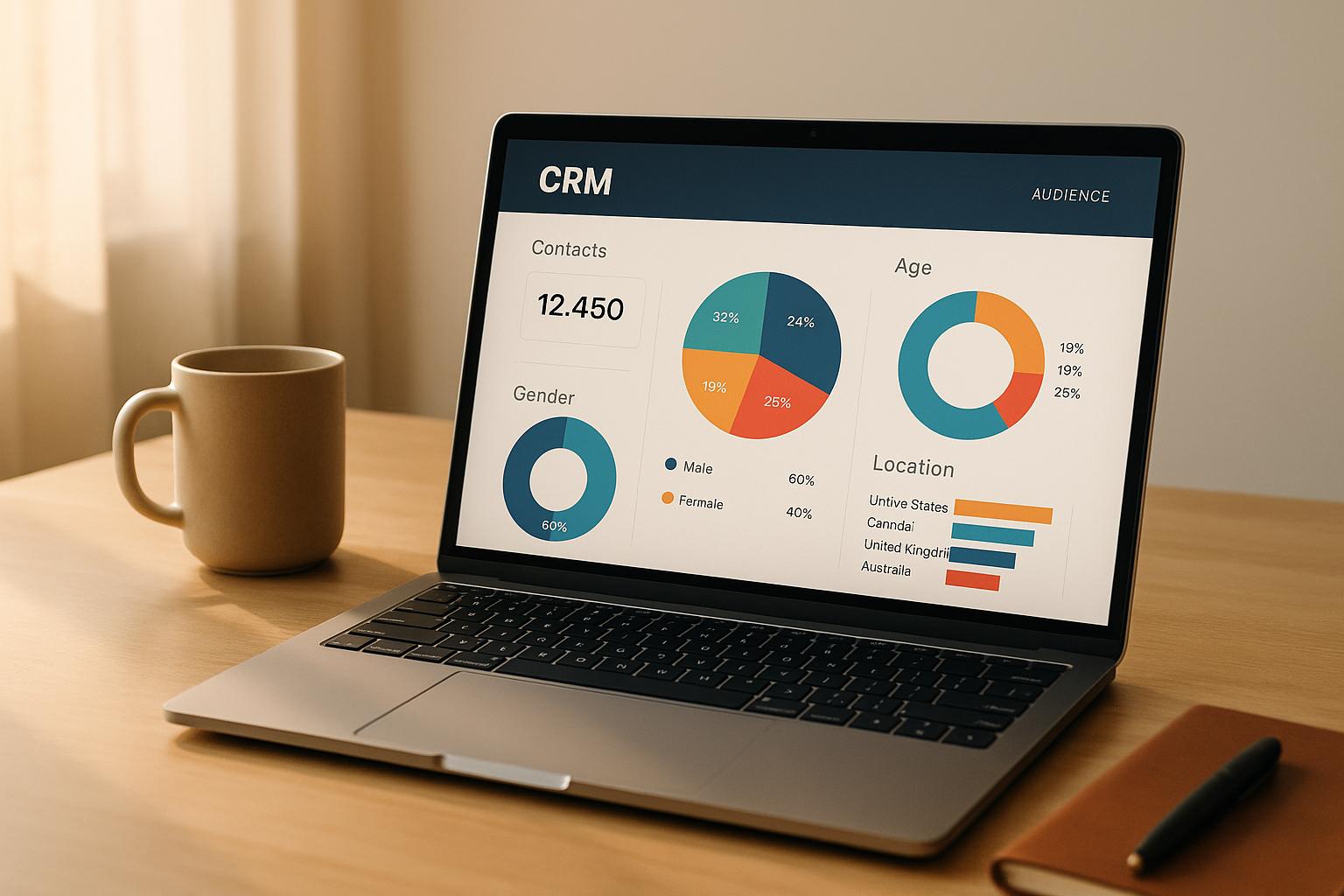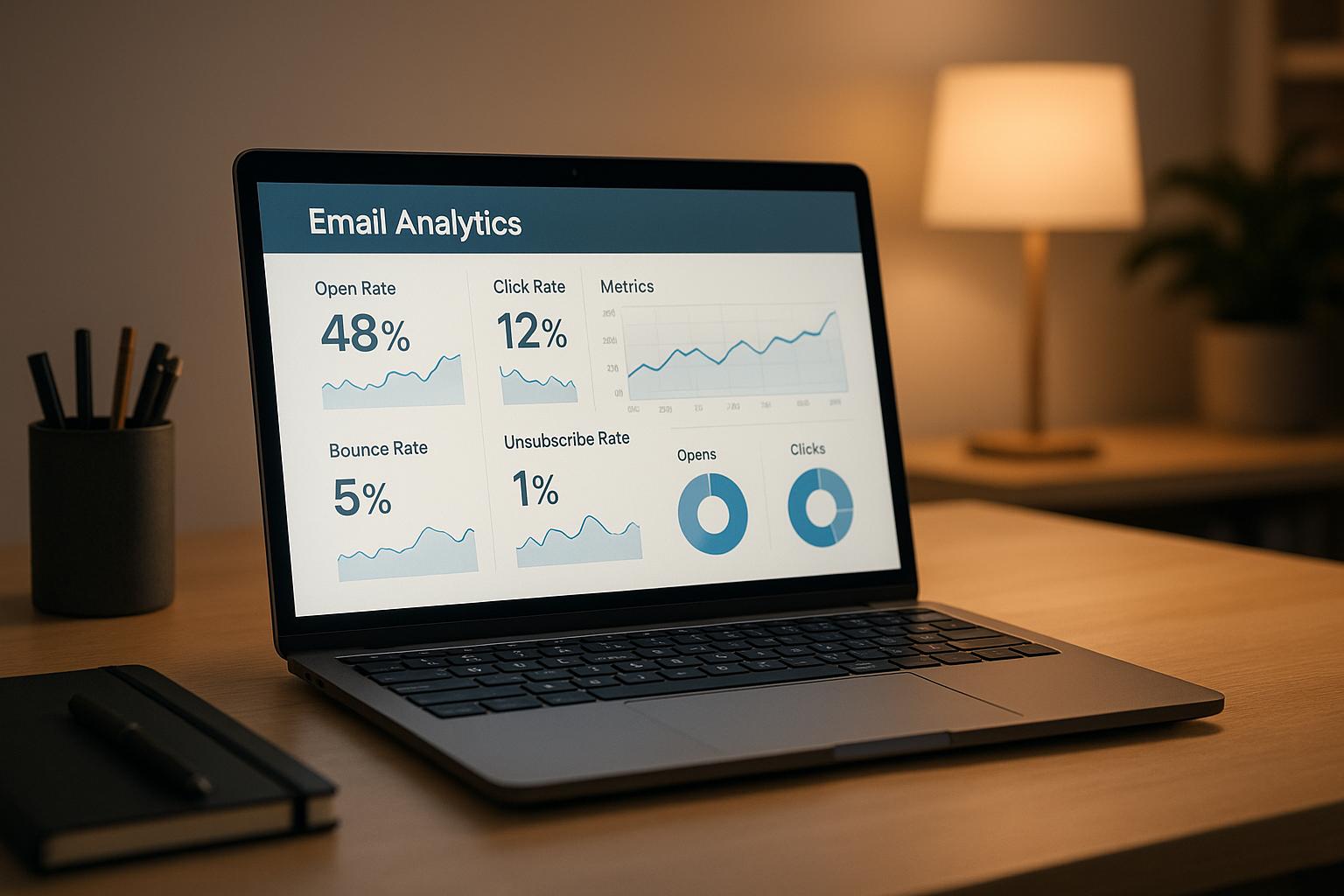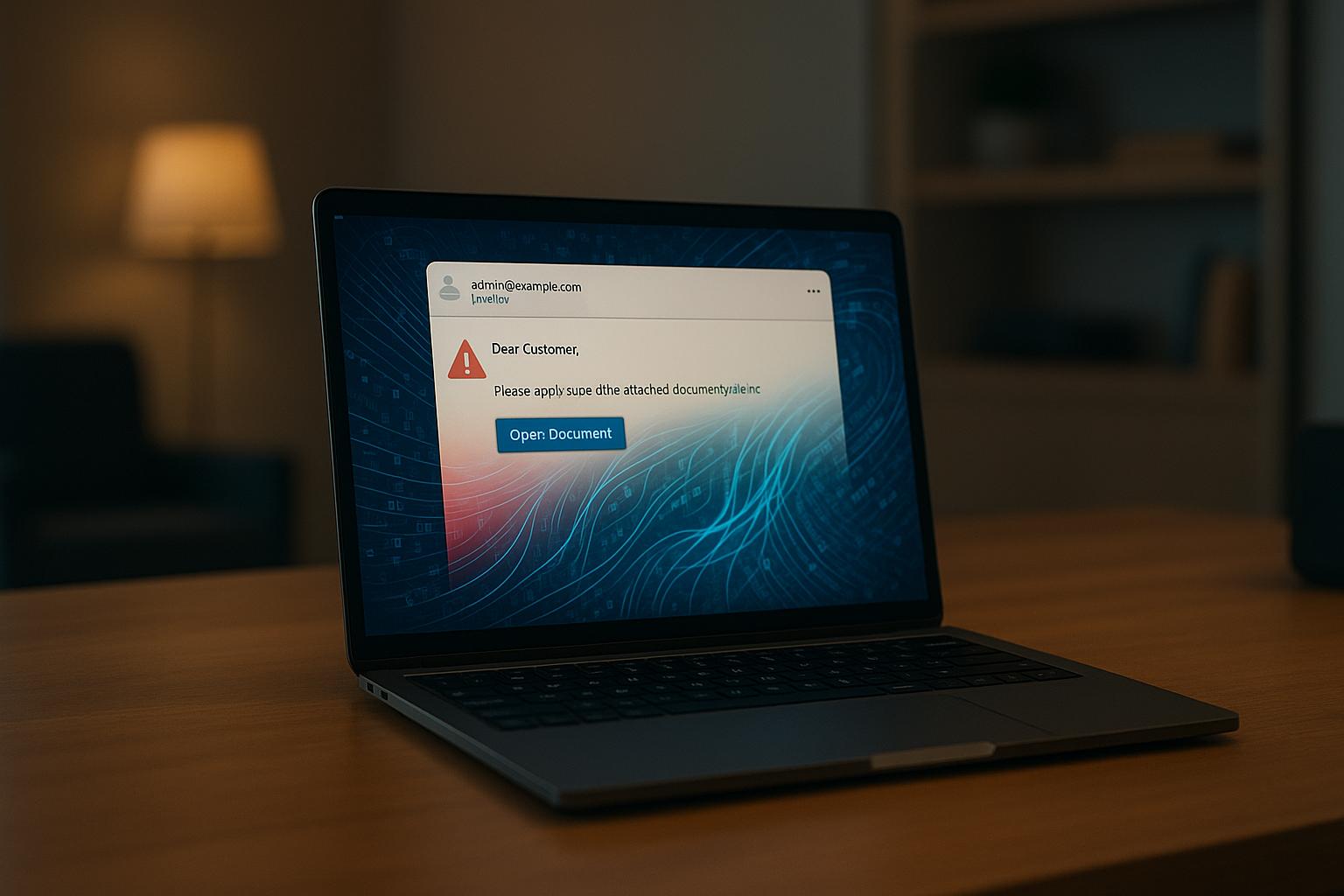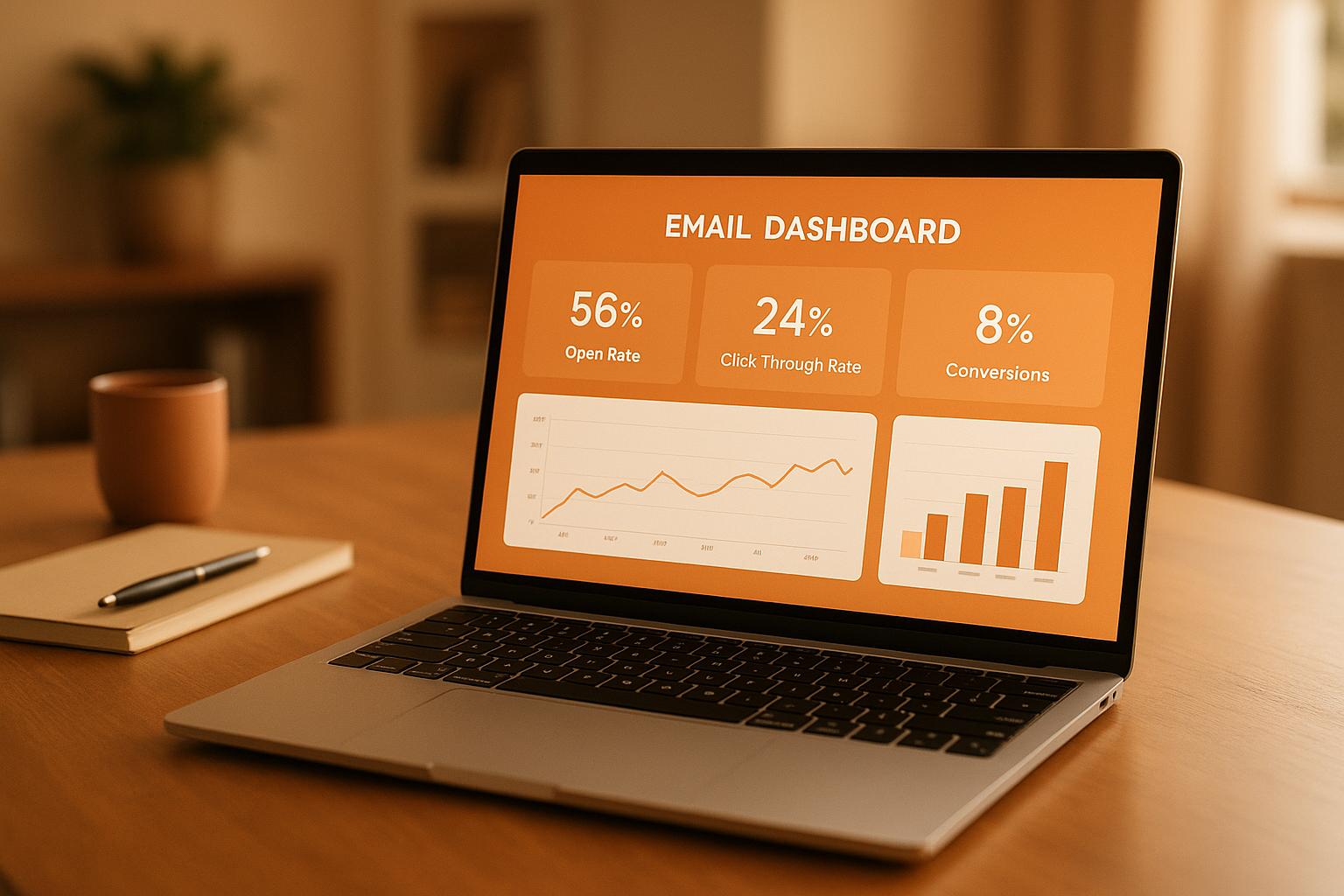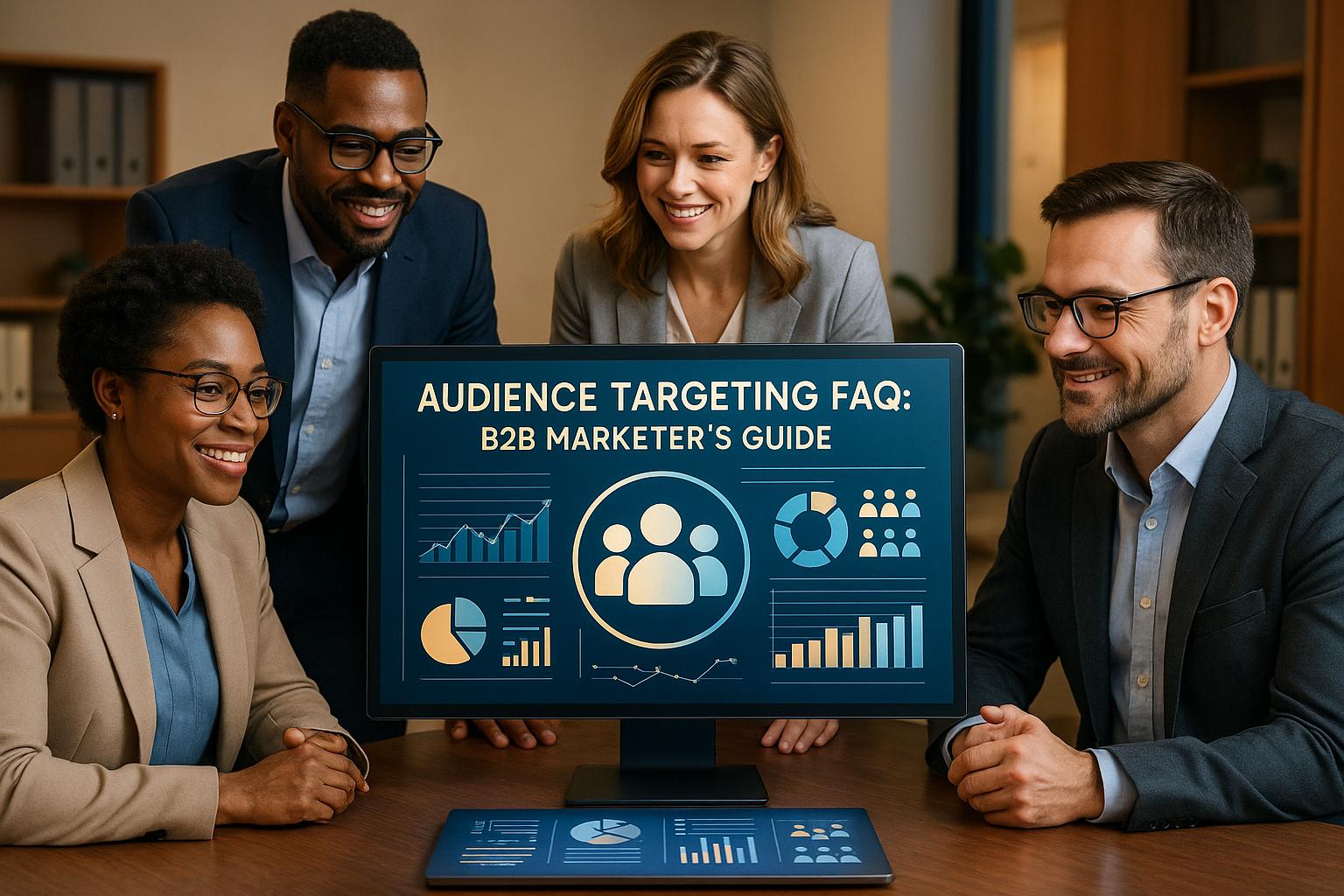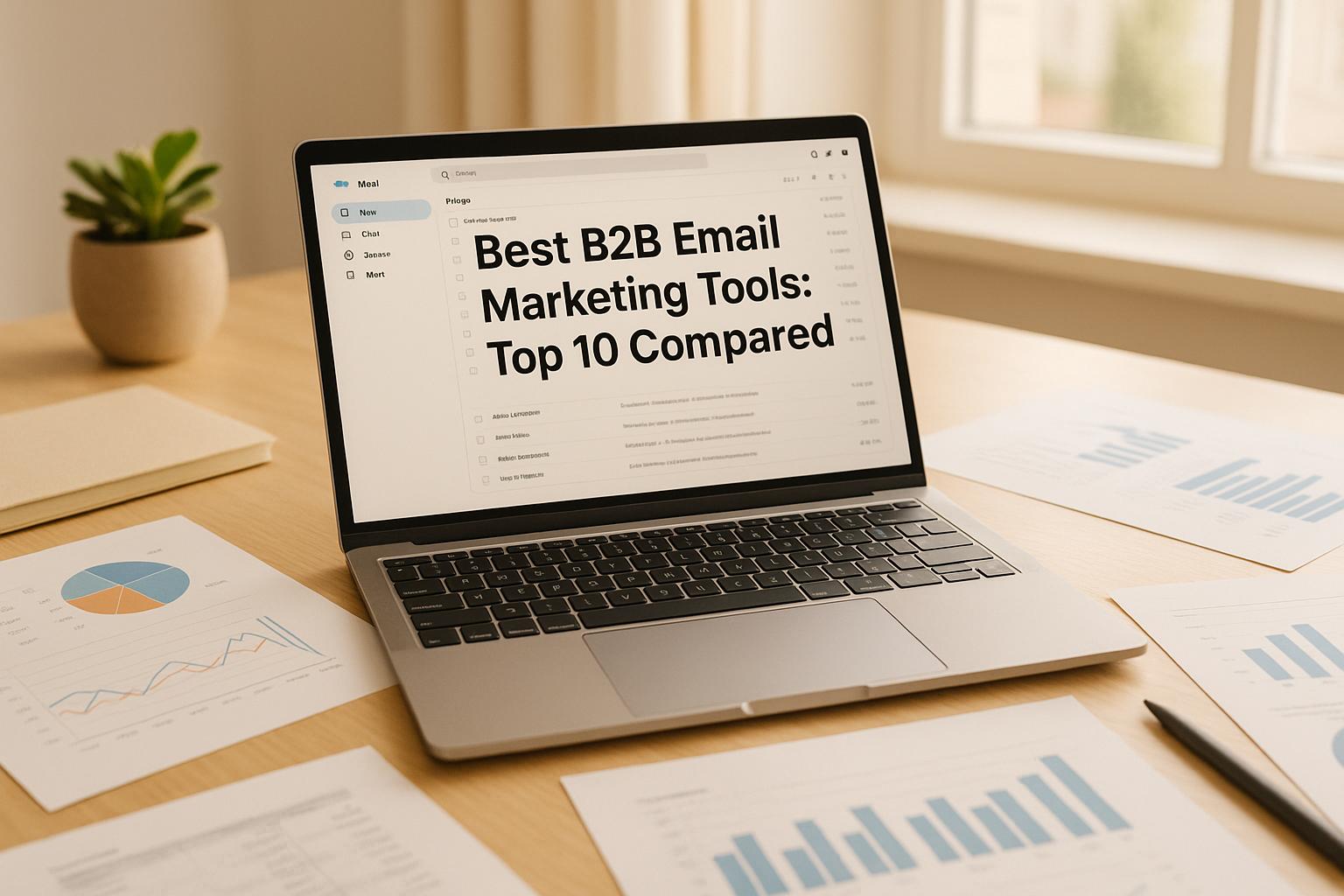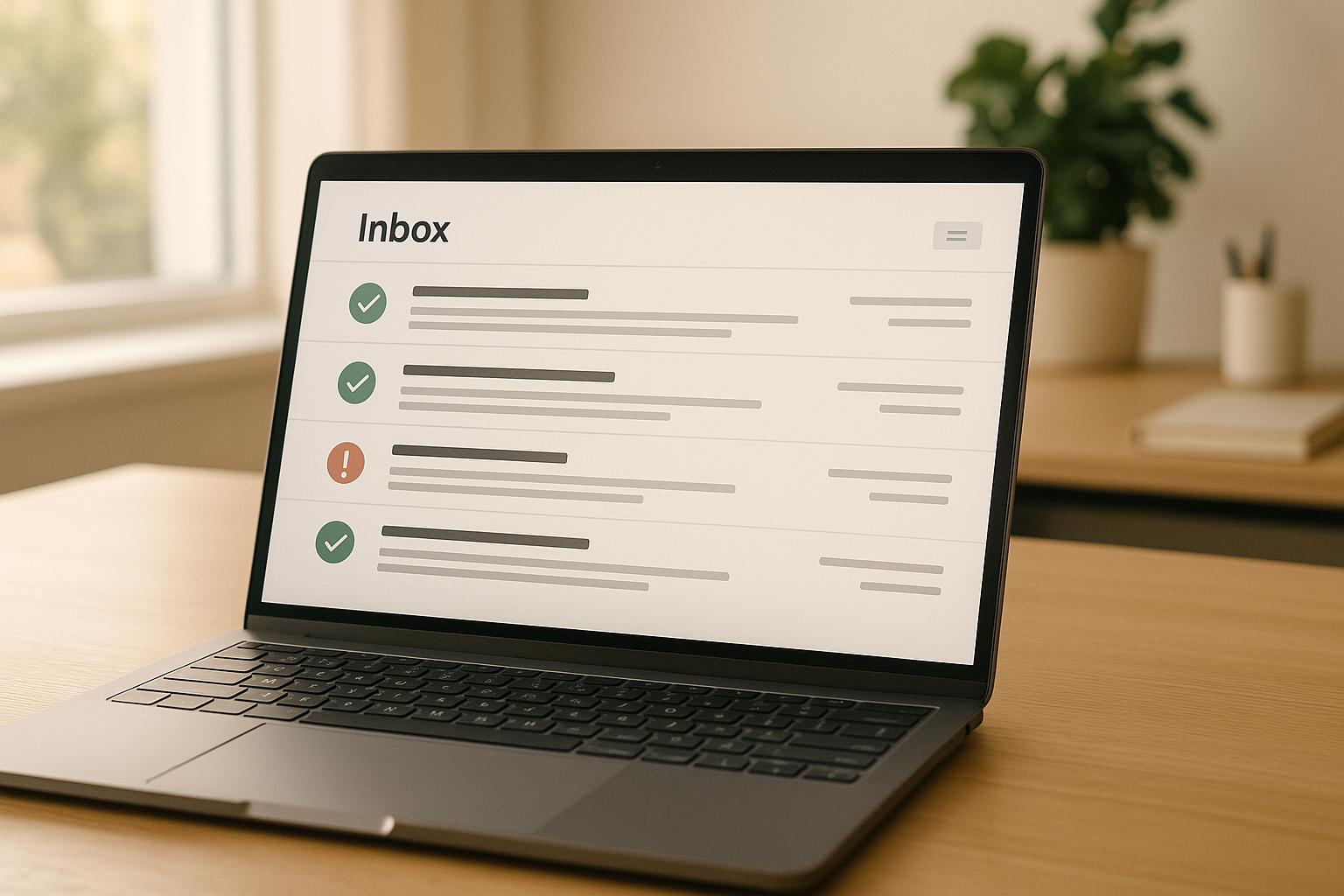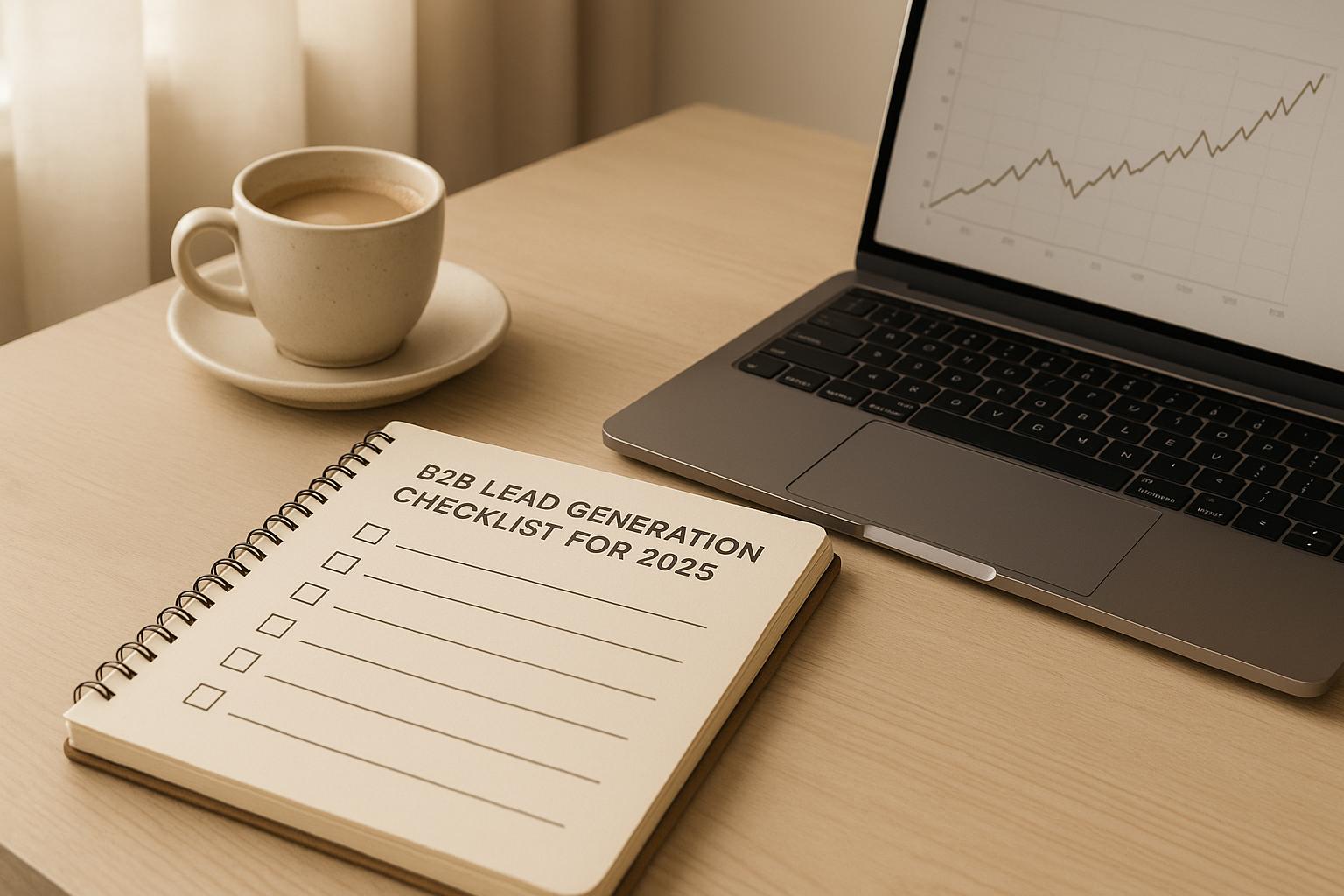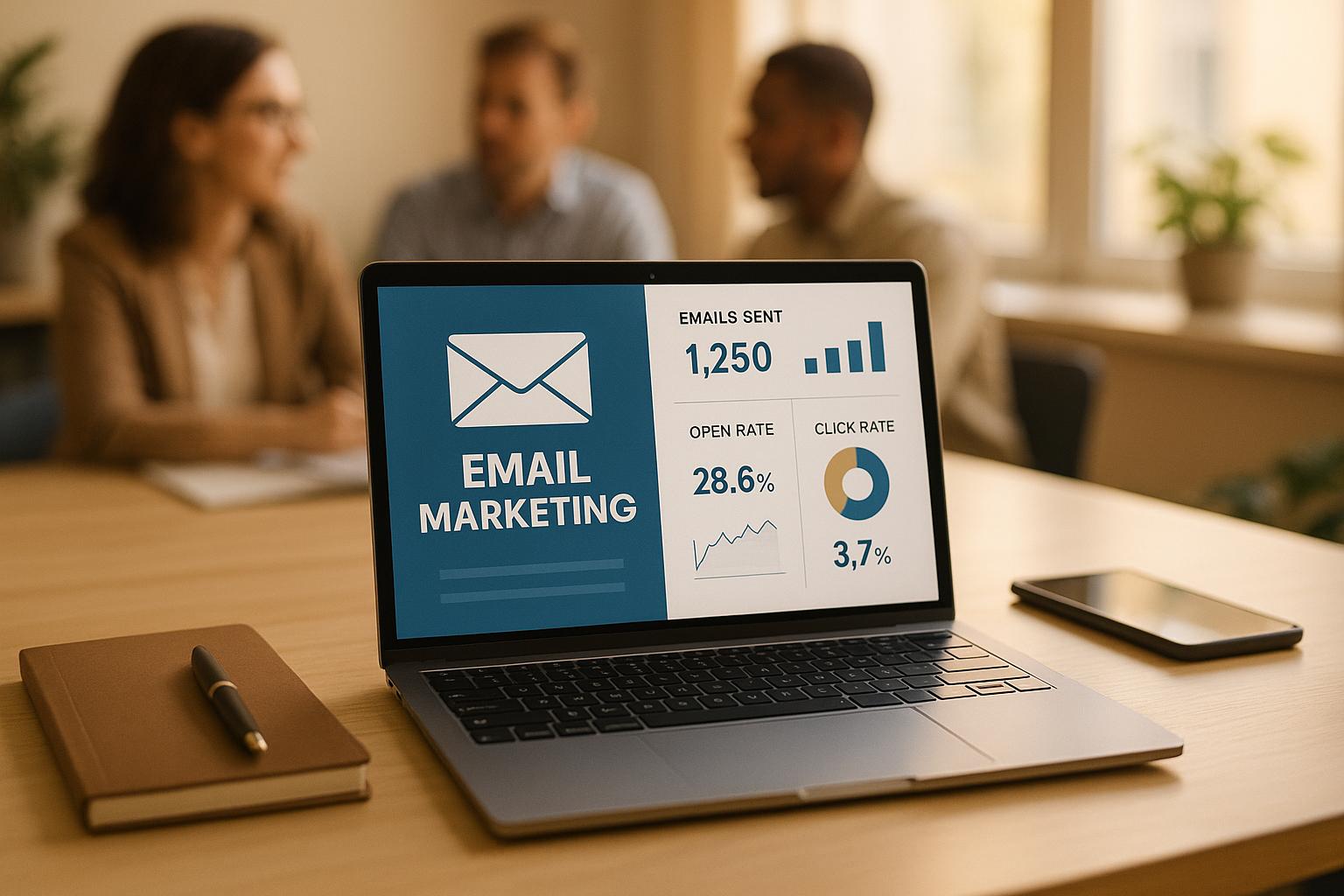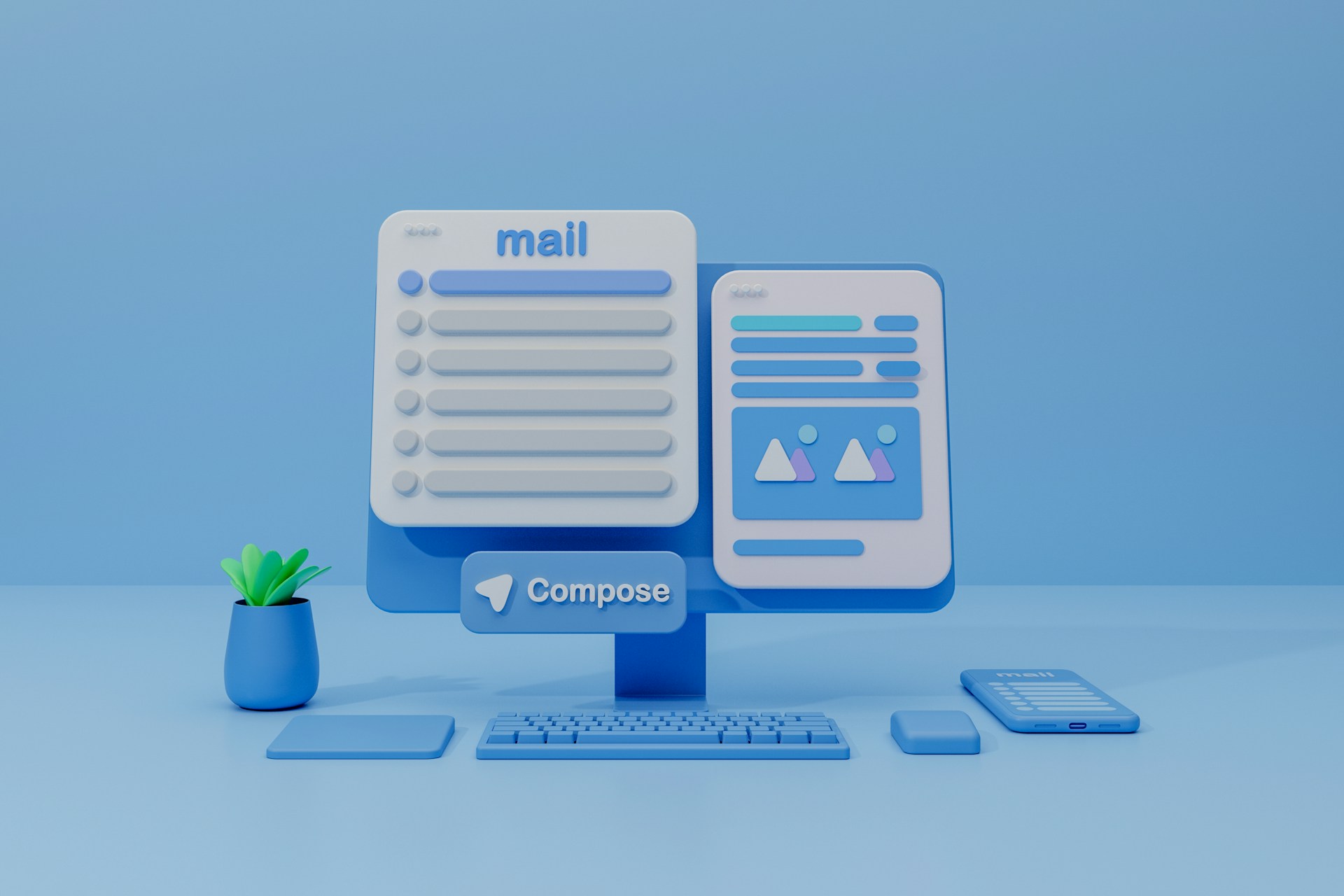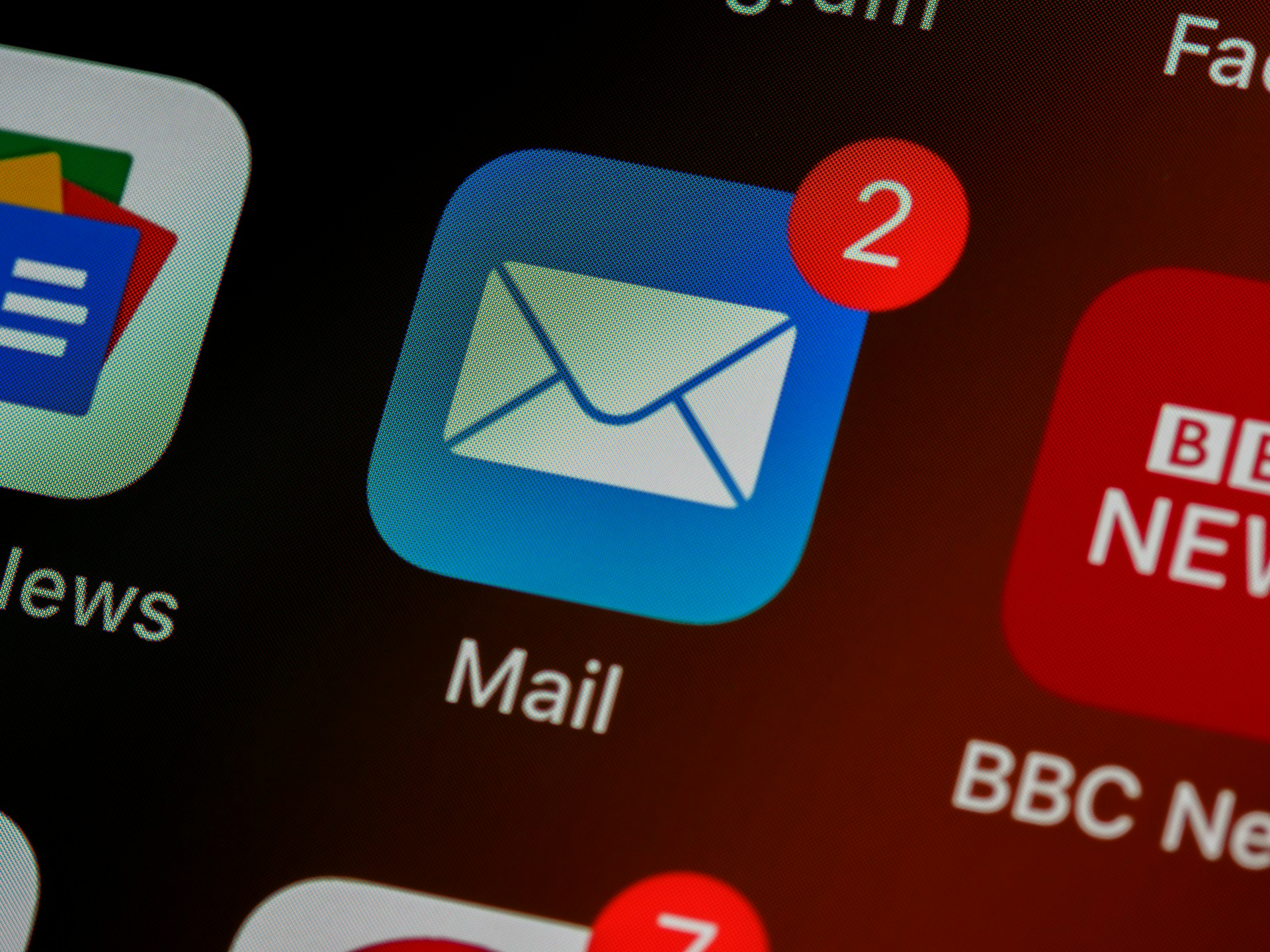Ultimate Guide To Email CTR Metrics
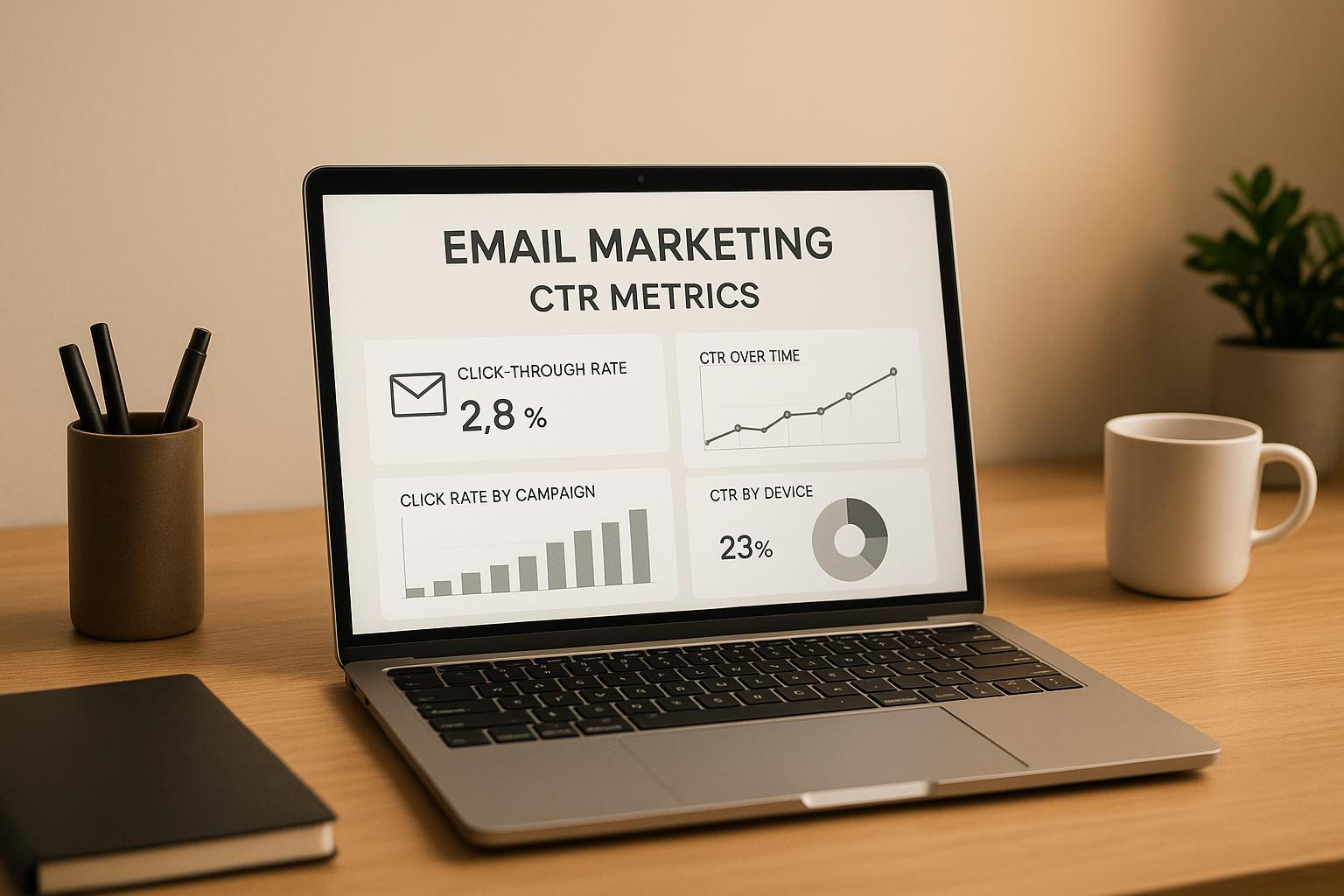
Email Click-Through Rate (CTR) measures the percentage of recipients who click a link in your email. It’s calculated as:
(Clicks ÷ Emails Delivered) × 100.
CTR is critical for understanding engagement and improving email performance, especially in B2B marketing. A high CTR shows your content and call-to-action (CTA) resonate with your audience, while a low CTR signals areas to improve.
Key insights:
- Average B2B CTR: 2.0%–3.2%, with top campaigns reaching 5%+.
- Strong CTOR (Click-to-Open Rate): Above 21.78%.
- Timing Matters: Best days are Tuesday–Thursday, 10 AM–2 PM.
- Mobile Optimization: Boosts CTR by 15%.
CTR depends on factors like audience targeting, content relevance, email design, and deliverability. Personalization, dynamic content, and clear CTAs can improve CTR. Tools like Breaker can help by offering real-time analytics, list cleaning, and audience segmentation.
Pro Tip: Combine CTR with other metrics, like CTOR and conversion rates, to get a full picture of your email's success.
How to Improve Email Click-Through Rate (CTR) | Email Examples
What Are Email CTR Metrics
Email CTR metrics go beyond just counting clicks - they measure how well your emails engage recipients and guide them through the sales funnel. By analyzing these metrics, B2B marketers can make smarter, data-backed decisions to improve their campaigns. Let’s dive into the key metrics that shape email performance.
CTR and Related Metrics Explained
Click-through rate (CTR) shows the percentage of delivered emails that result in at least one recipient clicking a link, call-to-action, or image within the email. The formula is:
CTR = (Number of Clicks ÷ Number of Emails Delivered) × 100
For instance, if you deliver 1,250 emails and 50 recipients click a link, the CTR would be:
(50 ÷ 1,250) × 100 = 4.0%.
CTR can be calculated as unique clicks (counting each recipient once) or total clicks (counting all clicks). Unique clicks are especially useful for B2B campaigns, as they provide a clearer picture of individual engagement.
Click-to-open rate (CTOR) measures the percentage of recipients who clicked a link after opening the email. This metric evaluates how compelling your content and call-to-action are. Its formula is:
CTOR = (Unique Clicks ÷ Unique Opens) × 100
For example, if you send 2,000 emails, 1,900 are delivered, 400 are opened, and 60 recipients click a link, the calculations would be:
- CTR = (60 ÷ 1,900) × 100 = 3.16%
- CTOR = (60 ÷ 400) × 100 = 15.0%
When combined with conversion rate data, these metrics provide a comprehensive view of email performance.
| Metric | Definition | Calculation | Primary Use Case |
|---|---|---|---|
| Click-Through Rate (CTR) | Percentage of recipients who clicked a link | (Clicks ÷ Emails Delivered) × 100 | Measures overall engagement and CTA effectiveness |
| Click-to-Open Rate (CTOR) | Percentage of opened emails with unique clicks | (Unique Clicks ÷ Unique Opens) × 100 | Evaluates content and call-to-action impact |
| Conversion Rate | Percentage of recipients completing a desired action | (Conversions ÷ Emails Delivered) × 100 | Tracks tangible results from campaigns |
Why CTR Matters in B2B Marketing
CTR is a critical metric for measuring how well your emails drive engagement and move prospects forward in the sales funnel. It bridges the gap between email opens and real business outcomes by tracking meaningful actions taken by recipients.
For B2B marketers, CTR reflects the effectiveness of your messaging and offers. A high CTR indicates that your content resonates with your audience, while a low CTR may signal issues with relevance, targeting, or clarity in your call-to-action.
Here are some key insights:
- 73% of marketers consider click-through rates the most important metric for evaluating email campaign success.
- Average B2B email CTRs typically range between 2.0% and 3.2%, though platforms like Breaker report an average CTR of 4% for active campaigns.
Analyzing CTR alongside other metrics can reveal deeper insights. For example, if your open rate decreases but CTR increases, it suggests that while fewer people are opening your emails, those who do are highly engaged - an opportunity to refine your targeting. On the other hand, a high CTR paired with a low conversion rate may indicate a disconnect between your email content and the landing page.
Platforms like Breaker offer real-time CTR analytics, giving B2B marketers instant feedback on campaign performance. This allows for quick adjustments to improve lead generation, activation, and nurturing efforts. Breaker’s emphasis on precise audience targeting and advanced performance tracking makes CTR data even more actionable for optimizing email content.
Finally, knowing industry benchmarks helps set realistic goals. CTOR benchmarks typically range from 10% to 15%, and exceeding these levels suggests that your content is engaging and effective. These benchmarks provide a solid foundation for evaluating success and identifying areas for improvement.
What Affects Email CTR
Several factors influence B2B email click-through rates (CTR). By understanding these elements, you can refine your campaigns to boost engagement and generate more leads.
Audience Targeting and Content Relevance
Effective audience targeting is the backbone of successful email campaigns. When emails are sent to segmented lists with content tailored to specific needs, CTRs can improve significantly. Take, for example, a B2B SaaS company that segmented its email list based on user behavior. By separating free trial users from paying customers, they achieved a 40% higher CTR compared to their previous broad campaigns [2, 11].
Going beyond basic demographics is crucial. Use behavioral and firmographic data to segment your audience. This could include job titles, industries, company sizes, or engagement histories. For instance, IT managers are more likely to engage with cybersecurity-related content, while CFOs might prefer messaging that emphasizes ROI and cost-saving benefits.
Personalization is another game-changer. It’s not just about adding a recipient’s first name to the email. Subject lines and content that align with individual interests can increase CTRs by up to 50% compared to non-personalized campaigns [2, 11].
Advanced platforms like Breaker help refine targeting by leveraging AI and proprietary data to identify the right B2B subscribers. This ensures your emails land in front of genuinely interested prospects, avoiding poorly targeted leads that can harm engagement and long-term deliverability.
Equally important is content relevance. Your email should address specific pain points and offer clear value. Targeted newsletters that speak directly to the recipient's needs tend to outperform generic ones.
Once your audience and content are fine-tuned, the next step is to focus on timing and deliverability.
Send Timing and Email Delivery
Even the best content won’t perform if it’s sent at the wrong time or doesn’t reach the inbox.
Timing plays a critical role in email performance. In the US, B2B emails sent on Tuesday, Wednesday, or Thursday between 10:00 AM and 2:00 PM local time often achieve higher open and click rates. This schedule aligns with when professionals are most active in their inboxes.
But timing alone isn’t enough. Deliverability is just as important. Emails that land in spam folders or fail to deliver won’t generate clicks. Poor deliverability can reduce CTR by 20–30% if a significant portion of your emails doesn’t reach the intended audience.
“Our experts manage mail streams using optimized sending logic, list hygiene, and reputation monitoring to ensure inbox placement.”
To maintain high deliverability, keep bounce rates below 2% by regularly cleaning your email list and removing invalid addresses. Implement authentication protocols like SPF and DKIM to improve inbox placement, and monitor your sender reputation closely. Avoid sourcing leads from low-quality providers, as this can damage your deliverability over time.
Industry Benchmarks
Understanding how your campaigns stack up against industry standards can provide valuable context. As of 2023, the average CTR for B2B email campaigns in the US is approximately 3.2%, though results can vary widely by sector.
| Industry | Average CTR | High Performance Range |
|---|---|---|
| Technology | 2.0–5.0% | 5.0%+ |
| Finance & Insurance | 5.0–7.0% | 7.0%+ |
| Healthcare | 3.0–5.0% | 5.0%+ |
| Manufacturing | 2.0–4.0% | 4.0%+ |
Top-performing campaigns often achieve CTRs of 5% or more, especially in industries like technology, finance, and consulting. For instance, Breaker reports an average active campaign CTR of 4%.
Certain types of emails can achieve even higher CTRs. New product announcements, for example, can see CTRs as high as 21%, while general newsletters tend to fall below industry averages. Companies with longer sales cycles, such as those in manufacturing or legal services, might experience lower CTRs but benefit from higher conversion rates per click.
Rather than chasing a single benchmark, use these numbers as a reference point. Your audience, industry, and campaign objectives should guide your expectations. Tracking performance trends over time will provide a clearer picture of your progress and areas for improvement.
And don’t forget: optimizing for mobile devices is essential. Poor mobile design can significantly hurt CTR and overall campaign performance.
How to Track and Analyze Email CTR
Tracking email click-through rates (CTR) effectively requires the right tools and a structured approach. Many platforms simplify this by embedding tracking links automatically and offering real-time dashboards that show both unique and total clicks.
CTR Tracking Best Practices
To get accurate CTR data, use email marketing platforms that embed tracking links automatically. These tools not only simplify the process but also provide real-time analytics, helping you see how your campaigns are performing at a glance.
When calculating CTR, always use the number of delivered emails as the base. This ensures your calculations account for bounced emails and reflect the actual reach of your campaign.
For consistency, use standardized UTM codes across all campaigns. A clear naming convention for source, medium, and campaign parameters makes it easier to compare data over time.
Before sending your campaign, test all tracking links to ensure they work properly. Broken or misconfigured links can lead to data loss, which could skew your results.
Maintaining a clean email list is equally important. Removing inactive or invalid addresses reduces bounce rates and ensures your CTR accurately represents engaged recipients.
Distinguish between unique clicks and total clicks. Unique clicks count each recipient only once, giving you a clearer view of individual engagement. Total clicks, on the other hand, include all clicks - even if the same person clicks multiple times.
Once your tracking is set up, dive into the data to uncover trends and insights that can shape your future campaigns.
How to Analyze CTR Data
CTR analysis isn’t just about looking at a single number - it’s about digging deeper into trends, patterns, and segments. For example, a B2B SaaS company managed to boost its CTR from 4% to 7% by segmenting its email list and personalizing subject lines.
Compare CTRs across audience segments, such as demographics or engagement history, to learn what resonates with different groups. This helps identify which messages work best and refines your targeting strategy.
Keep an eye on how changes to your campaigns affect CTR. Whether it’s tweaking subject lines, adjusting send times, or modifying call-to-action (CTA) buttons, tracking these adjustments helps you build a knowledge base for future optimization.
A/B testing is a powerful way to fine-tune your strategy. By testing one variable at a time - like email design, content length, or CTA placement - you can pinpoint what drives performance changes.
To get a complete picture of your email’s performance, monitor both CTR and click-to-open rate (CTOR). CTOR measures the percentage of clicks relative to opens, offering insight into how engaging your content is once the email is opened. A strong CTOR is above 21.78%, while rates below 9.90% suggest room for improvement.
These insights can guide you toward better tracking and higher engagement rates.
How Breaker Improves CTR Tracking

Breaker takes CTR tracking to the next level with its real-time performance analytics. Breaker provides instant insights into metrics like click-through rates, open rates, and subscriber growth - eliminating the need for tedious data searches.
"Get instant visibility into open rates, click-throughs, subscriber growth, and more. No digging, no delays - just clean, actionable insights so you can optimize every send." – Breaker
What makes Breaker stand out is its ability to turn raw data into actionable insights. This helps marketers quickly identify what’s working and where adjustments are needed, streamlining the optimization process.
The platform reports an average CTR of 4% across its campaigns. This success is attributed to its precise audience targeting and automated lead generation, ensuring emails reach genuinely engaged subscribers.
Breaker’s real-time tracking allows you to monitor campaigns as they unfold, enabling quick adjustments when needed. Its Performance Analytics feature is included in all plans, ranging from the Starter plan at $200/month to the Custom plan at $1,750/month.
Additionally, Breaker’s advanced segmentation tools let you analyze CTR by audience demographics, behaviors, and engagement levels. Combined with a focus on deliverability, these features ensure your CTR data reflects authentic engagement from your audience.
sbb-itb-8889418
How to Improve Email CTR
Boosting your email click-through rate (CTR) goes beyond just tracking numbers. It involves a mix of personalization, smart design, and precise audience targeting. Here’s how you can make your emails more engaging and impactful.
Personalization and Dynamic Content
Personalized subject lines are a quick way to grab attention. Emails with subject lines tailored to the recipient see a 26% higher open rate, which naturally leads to better CTRs. But personalization isn’t just about using someone’s name - it’s about crafting content that speaks to their industry, job role, or previous interactions with your brand.
Taking it a step further, dynamic content blocks allow you to show different messages to different audience segments within the same email campaign. For example, a B2B SaaS company that included industry-specific case studies and customized calls-to-action (CTAs) in their emails saw their CTR jump from 3.2% to 6.8% over three months.
To make personalization work, segment your email list based on factors like demographics, behavior, or engagement level. This ensures your content resonates with each group. Once your content is tailored, the next step is to optimize the design and usability of your emails.
Email Design and Mobile Optimization
With 47% of email opens happening on mobile devices, mobile optimization isn’t optional - it’s essential. Emails optimized for mobile generate a 15% higher CTR compared to those that aren’t.
Here’s how to make your emails mobile-friendly:
- Use a responsive, single-column layout.
- Include large, tappable buttons.
- Keep your copy concise.
Testing your emails on different devices ensures they look good everywhere. A clear visual hierarchy also makes a difference - use bullet points and short paragraphs to highlight key messages. And when it comes to CTAs, placement is key. Place a prominent CTA above the fold and another after important sections. Avoid cluttering your email with multiple CTAs; instead, focus on one clear, action-oriented message. For example, replace vague phrases like "Learn More" with something specific like "Download the B2B Benchmark Report." This approach can increase click rates by as much as 371%.
When you combine personalized content with a user-friendly design, precise targeting is the final piece that ties everything together. That’s where tools like Breaker come in.
Better Targeting with Breaker
Breaker offers advanced audience targeting, helping you reach the exact B2B subscribers who match your ideal customer profile. By ensuring your emails land in the inboxes of the right people, Breaker helps drive higher engagement.
The platform’s easy-to-use newsletter builder simplifies creating high-performing emails. Without dealing with complicated templates, you can focus on crafting compelling content and CTAs.
"Breaker is our #1 source of booked calls." – Brennan Haelig, CEO, Jumpstart ROI
Breaker doesn’t just stop at targeting - it also helps clean up your email lists. Its email validation tools remove invalid addresses, reducing bounce rates and ensuring your CTR metrics reflect genuine engagement.
"We tripled our sponsor revenue and doubled our community memberships with Breaker. Well over a 10X ROI." – Peter Lohmann, CEO, RL Property Management
A/B testing becomes far more effective with Breaker’s precise targeting. By reaching an engaged audience, your tests yield better insights, helping you fine-tune your campaigns. With tools for audience targeting, email validation, and performance tracking, Breaker sets the stage for consistently higher CTRs.
How to Set CTR Goals and Measure Success
To set meaningful CTR (Click-Through Rate) goals, you need to dig into your data, combining industry standards with your own performance history. The goal is to create targets that are both realistic and challenging, using your insights to drive continuous improvement.
How to Read CTR Results
CTR alone doesn’t tell the full story. To truly understand your campaign’s performance, you need to evaluate it alongside other metrics like open rates, conversion rates, and bounce rates. For example:
- A high open rate but a low CTR could mean your subject lines are doing their job, but your email content or calls-to-action (CTAs) need work.
- A high CTR paired with a low conversion rate might point to issues with your landing page or offer rather than the email itself.
It’s also important to distinguish between unique clicks and total clicks. This helps you identify whether a broad audience or a smaller group of highly engaged users is driving your CTR. Segmenting your CTR data can reveal additional insights, like whether mobile users are less engaged than desktop users or which audience segments perform the best.
Another factor to keep in mind is bounced emails. Since they inflate the denominator in your CTR calculation, they can skew your results. For example, if you send 1,000 emails and 50 bounce, base your calculation on the 950 successful deliveries for a more accurate CTR.
Tools like Breaker’s real-time analytics can provide detailed CTR breakdowns, helping you make quick, data-driven adjustments. These insights are the starting point for setting actionable CTR goals.
Setting Realistic CTR Goals
Once you’ve analyzed your CTR data, it’s time to define achievable targets. Start by consulting industry benchmarks. For B2B email campaigns, CTRs typically range from 2.0% to 3.2%, with strong performance often falling between 2% and 5%. Use these benchmarks as a reference, but your historical performance should carry more weight.
For instance, if your current CTR is 1.8% and the industry average is 2.5%, you might aim for a modest increase to 2.1% over the next quarter, with a goal of reaching 2.5% within six months.
A helpful framework for setting these targets is SMART: Specific, Measurable, Achievable, Relevant, and Time-bound. Instead of a vague goal like "improve CTR", aim for something concrete, such as: "Increase CTR from 2.1% to 2.5% within three months by optimizing CTAs and refining audience segmentation."
Here’s a sample table to illustrate how you can align your goals with benchmarks and timelines:
| Current CTR | Industry Benchmark | 3-Month Goal | 6-Month Goal |
|---|---|---|---|
| 1.5% | 2.5% | 1.8% | 2.2% |
| 2.0% | 2.5% | 2.3% | 2.7% |
| 3.0% | 2.5% | 3.2% | 3.5% |
Don’t forget to also consider your click-to-open rate (CTOR) alongside CTR. While CTR measures engagement across all delivered emails, CTOR focuses on how engaging your content is to those who open your emails. For B2B campaigns, CTOR typically falls between 9.9% and 15%, with strong results exceeding 21.78%. This metric has become even more important as privacy changes make open rates less reliable.
Regularly revisit and adjust your goals based on new data, seasonal trends, or shifts in audience behavior. Breaker’s performance tracking tools make it easy to monitor progress and refine your approach as needed.
Finally, the quality of your email list plays a huge role in your CTR. A clean, engaged list will naturally perform better than a large, unfocused one. Tools like Breaker’s audience targeting and email validation features can help ensure your subscribers are primed for engagement, making it easier to hit your CTR targets.
Align your CTR goals with your broader business objectives. For example, if lead generation is your primary focus, prioritize improving CTR for your most qualified audience segments. On the other hand, if brand awareness is your goal, it may be acceptable to have a lower CTR while reaching a larger audience.
Conclusion
Email click-through rate (CTR) metrics play a crucial role in shaping successful B2B marketing campaigns. They provide a clear window into how well your content connects with your audience. By tracking CTR consistently, you can gauge engagement, identify what drives clicks, and understand behavioral patterns. These insights allow you to fine-tune your content strategy - whether that means crafting more targeted messages, creating stronger calls-to-action, or ensuring your emails are optimized for mobile viewing - all of which contribute to better campaign performance and higher ROI.
Smart marketers treat CTR optimization as an ongoing effort. Regularly comparing your metrics to industry benchmarks - typically around 2% to 4%, with standout campaigns often hitting over 5% - keeps you competitive. By segmenting your audience, tailoring your content, and experimenting with different strategies, you can steadily improve engagement and achieve stronger results.
Breaker simplifies this process with tools like real-time analytics, precise audience targeting, and automated lead generation. The platform boasts an average CTR of 4% and open rates of 70% across active campaigns. With its combination of actionable insights, reliable email delivery, and an intuitive design, Breaker helps B2B marketers hit their CTR goals with greater ease and efficiency.
FAQs
What are the best ways to boost email click-through rates in B2B marketing campaigns?
To improve email click-through rates (CTR) in B2B marketing, focus on crafting newsletters that truly connect with your audience. Make sure your content is engaging and visually appealing, and include clear, action-oriented calls-to-action (CTAs) that direct readers toward the next step. Place your links thoughtfully, ensuring they align with the content and encourage interaction.
Equally important is targeting the right audience. When you understand your ideal customer’s needs and interests, you can create messaging that feels relevant and personalized, driving higher engagement. Using tools with features like automated lead generation and real-time performance tracking can further fine-tune your campaigns, helping you achieve stronger results.
How does mobile optimization impact email click-through rates, and what are the best ways to optimize for mobile devices?
Mobile optimization is a big deal when it comes to boosting email click-through rates (CTR). Why? Because a huge chunk of email opens happen on mobile devices. If your emails aren’t designed with mobile users in mind, you risk frustrating your audience, which can tank engagement and CTRs.
Here’s how you can make your emails shine on mobile:
- Responsive design: Make sure your email adapts smoothly to any screen size. Nobody likes pinching and zooming to read.
- Short subject lines and preheaders: Mobile screens are small, so keep it brief and impactful to grab attention.
- Simple layouts: Stick to a clean, single-column design with larger fonts and buttons that are easy to tap. No one wants to struggle with tiny links.
- Less clutter: Avoid overloading your email with too much text or too many images. A clean, straightforward message works best for mobile readers.
Focusing on mobile optimization ensures a smoother experience for your audience, which can lead to better engagement and higher click-through rates.
Why should you evaluate email CTR alongside metrics like CTOR and conversion rates for a full picture of performance?
While click-through rate (CTR) is a valuable metric for gauging how engaging your email content is, it only scratches the surface. Pairing CTR with other indicators like click-to-open rate (CTOR) and conversion rates paints a clearer picture of how well your emails connect with readers and whether they inspire actions like purchases or sign-ups.
For instance, if your CTR is high but conversion rates are low, it might signal that your call-to-action (CTA) needs fine-tuning. On the other hand, a low CTOR could indicate a mismatch between your subject line and the actual email content. By analyzing these metrics together, you gain a deeper understanding of your email campaign’s performance and can make smarter, data-backed adjustments to achieve better results.


